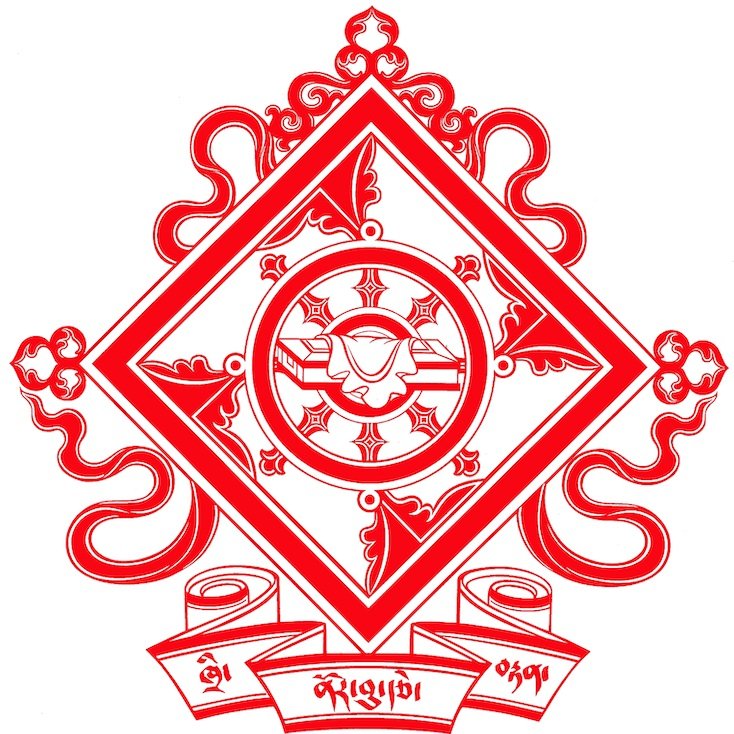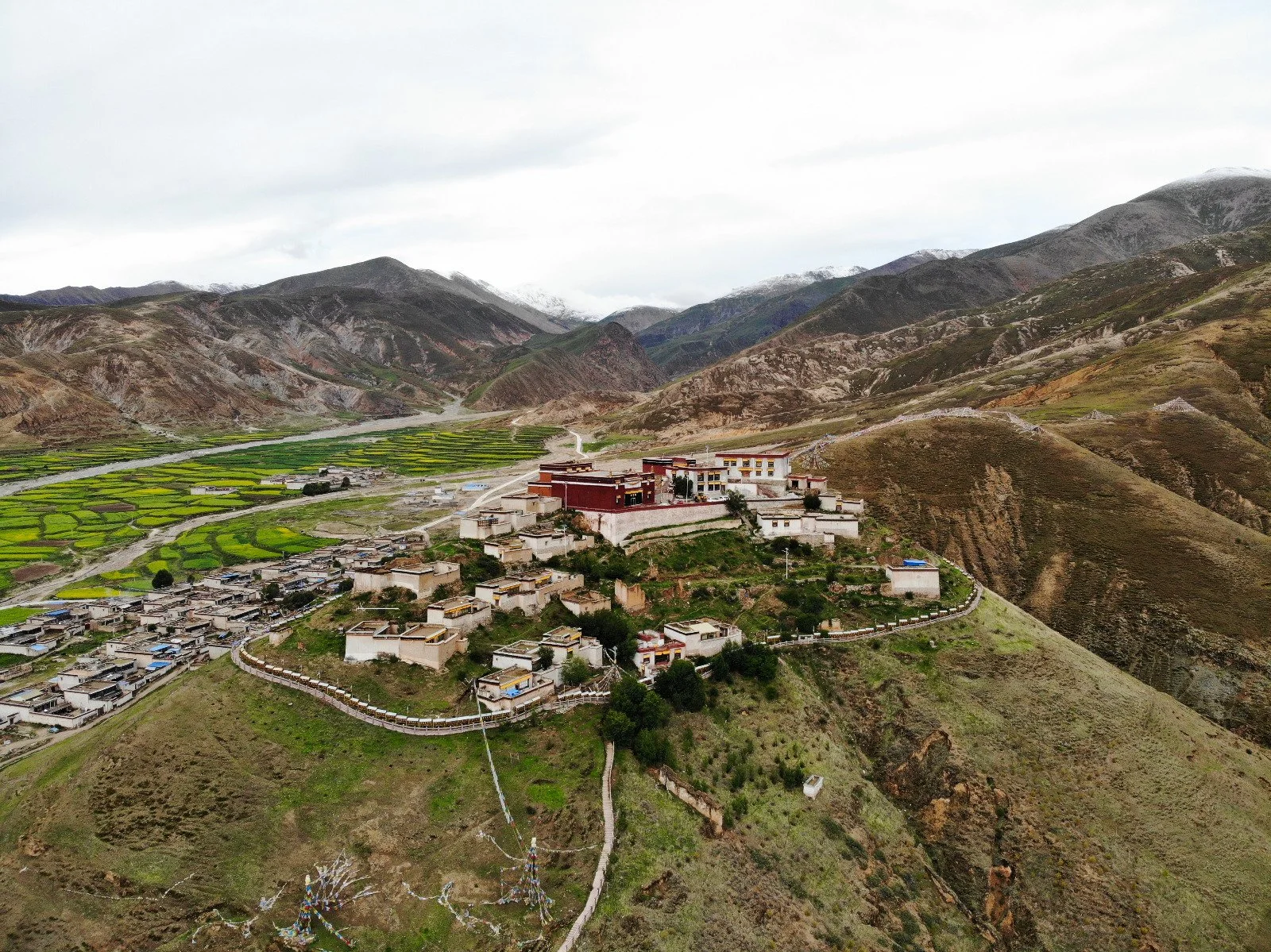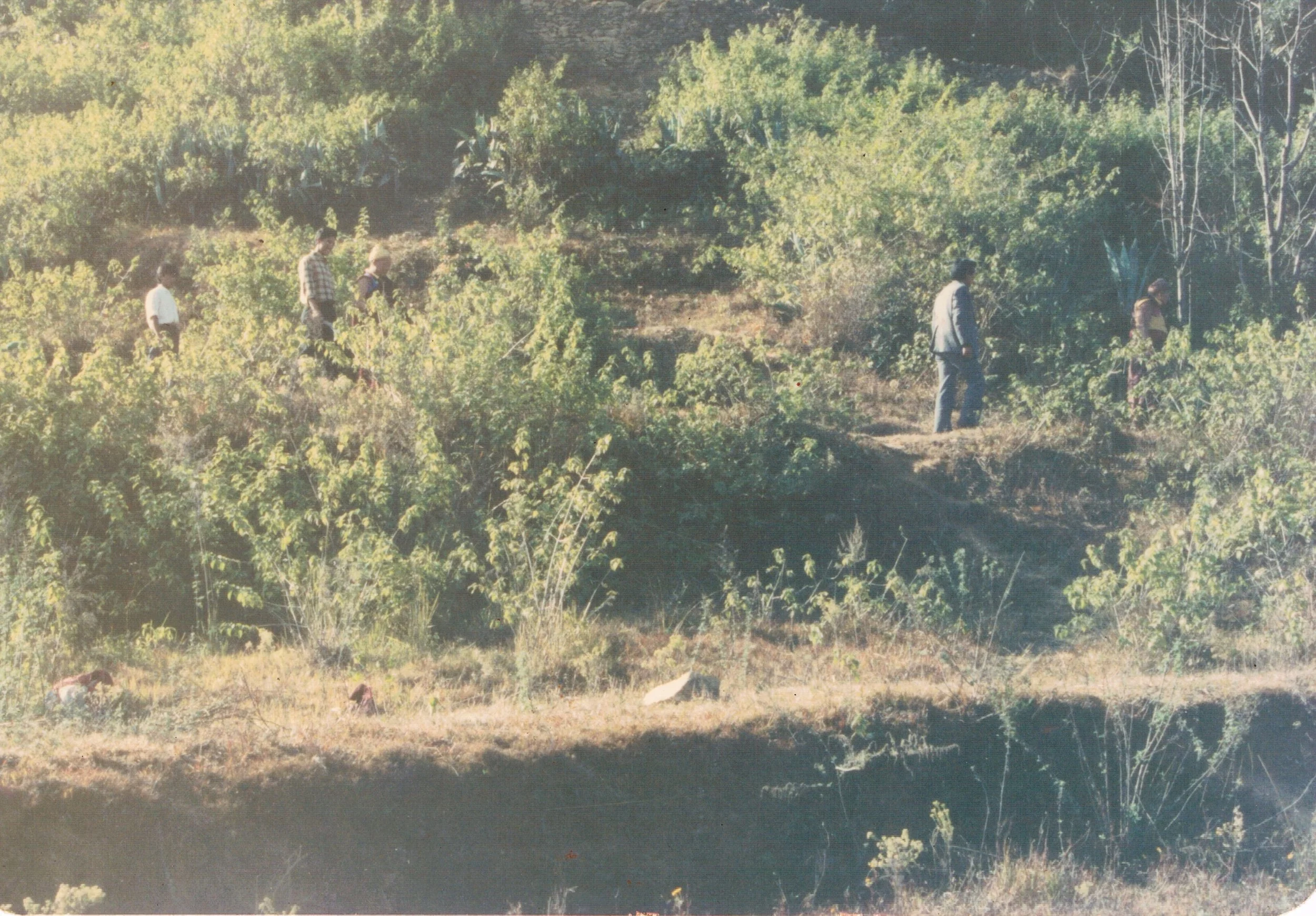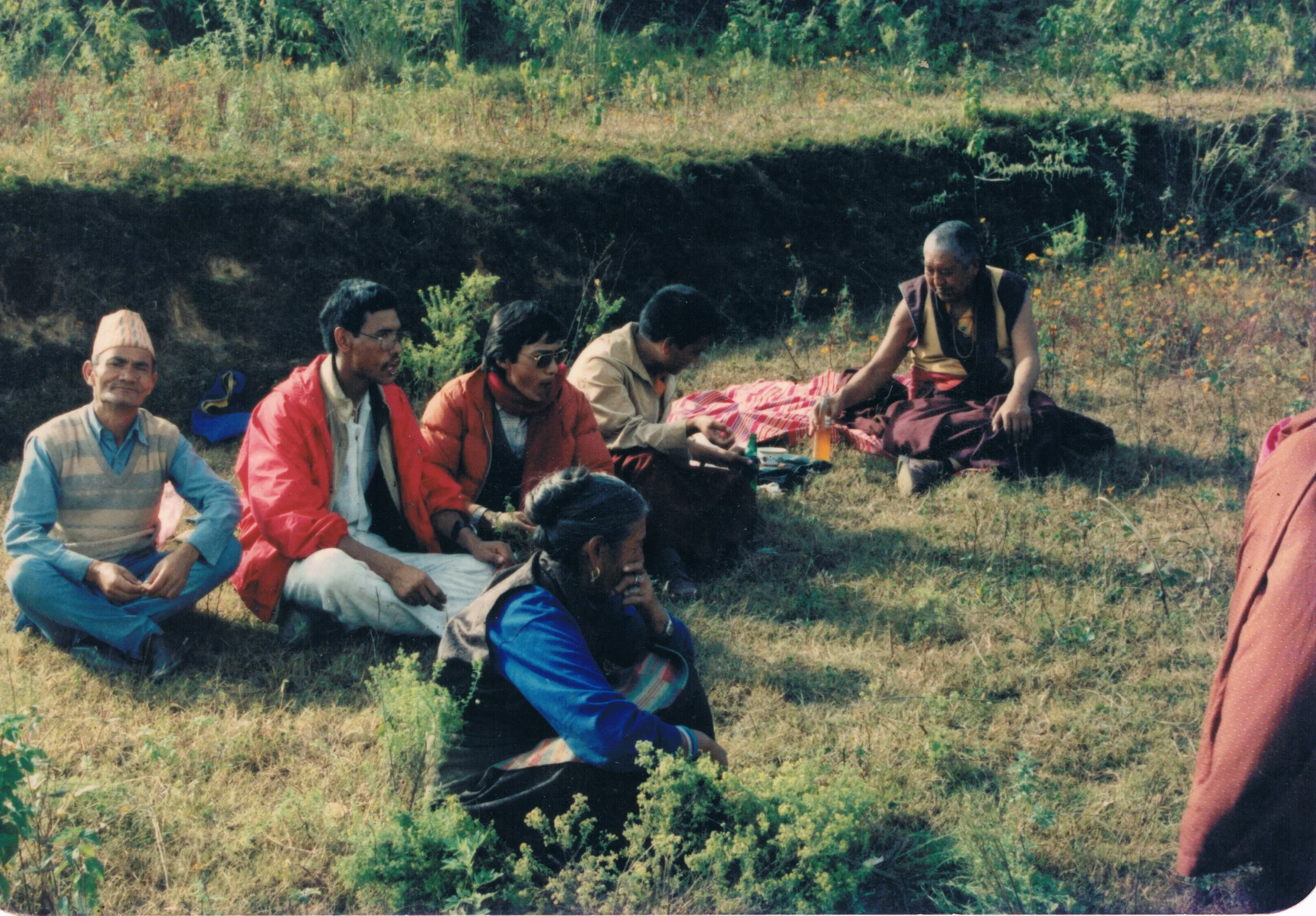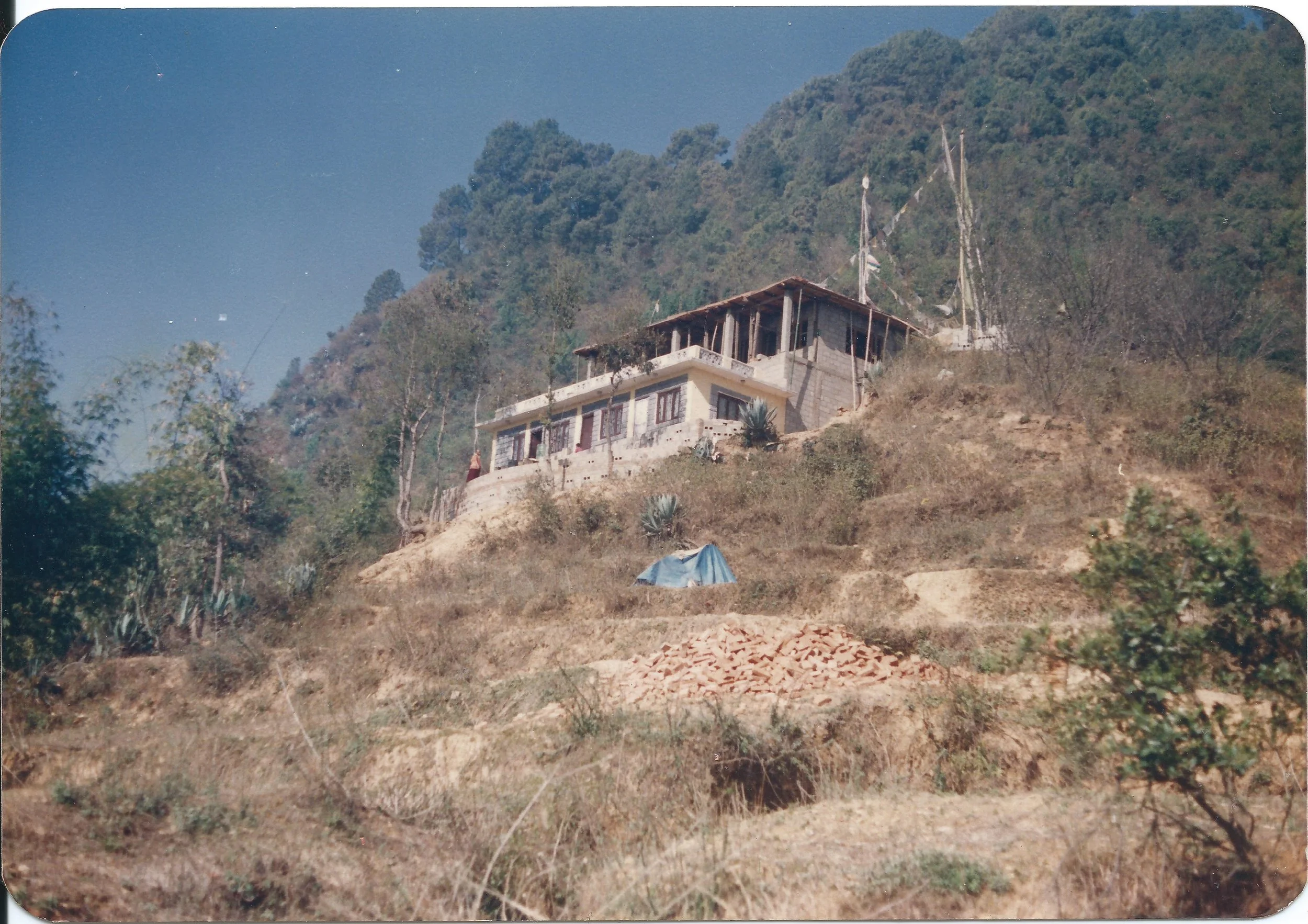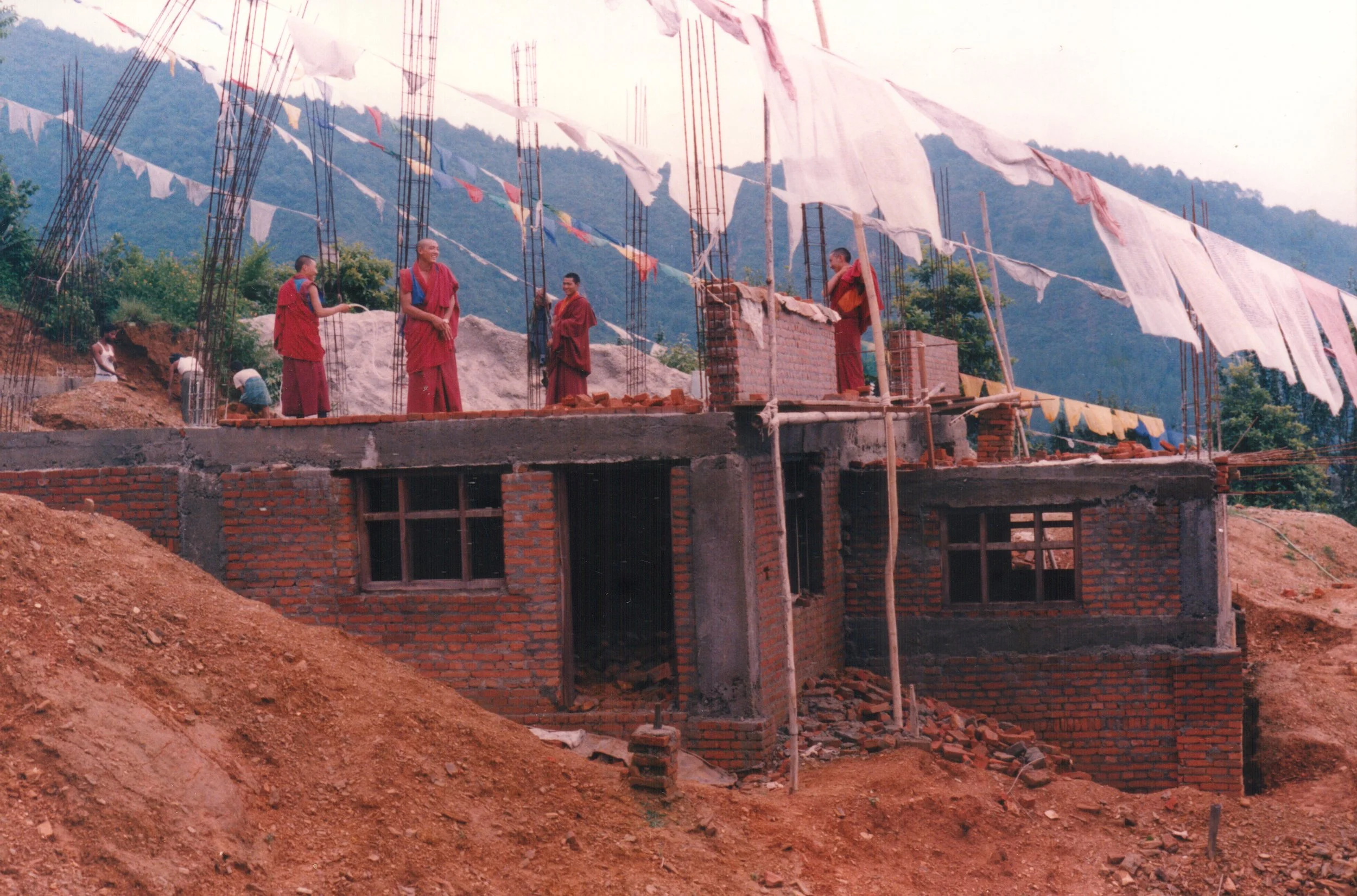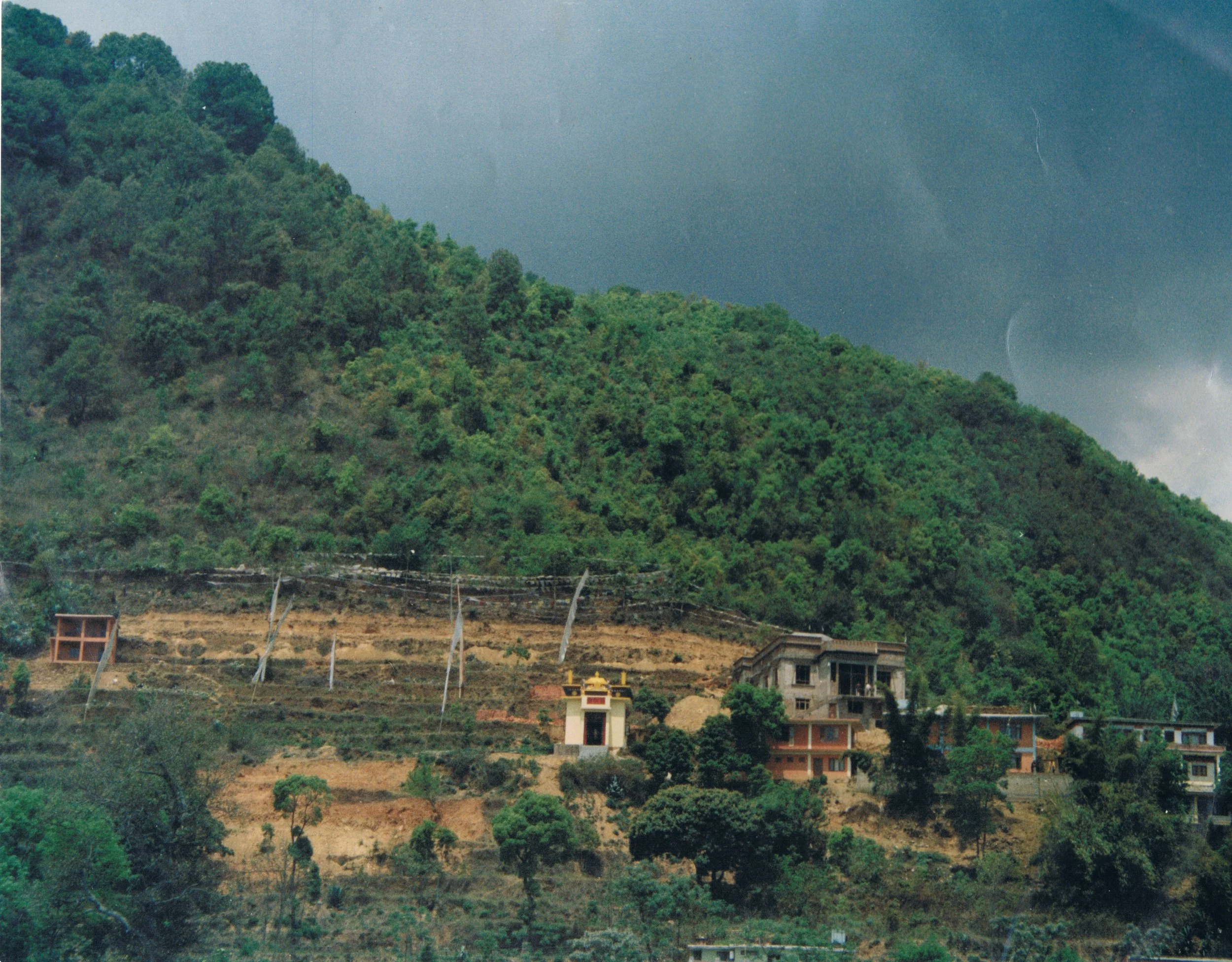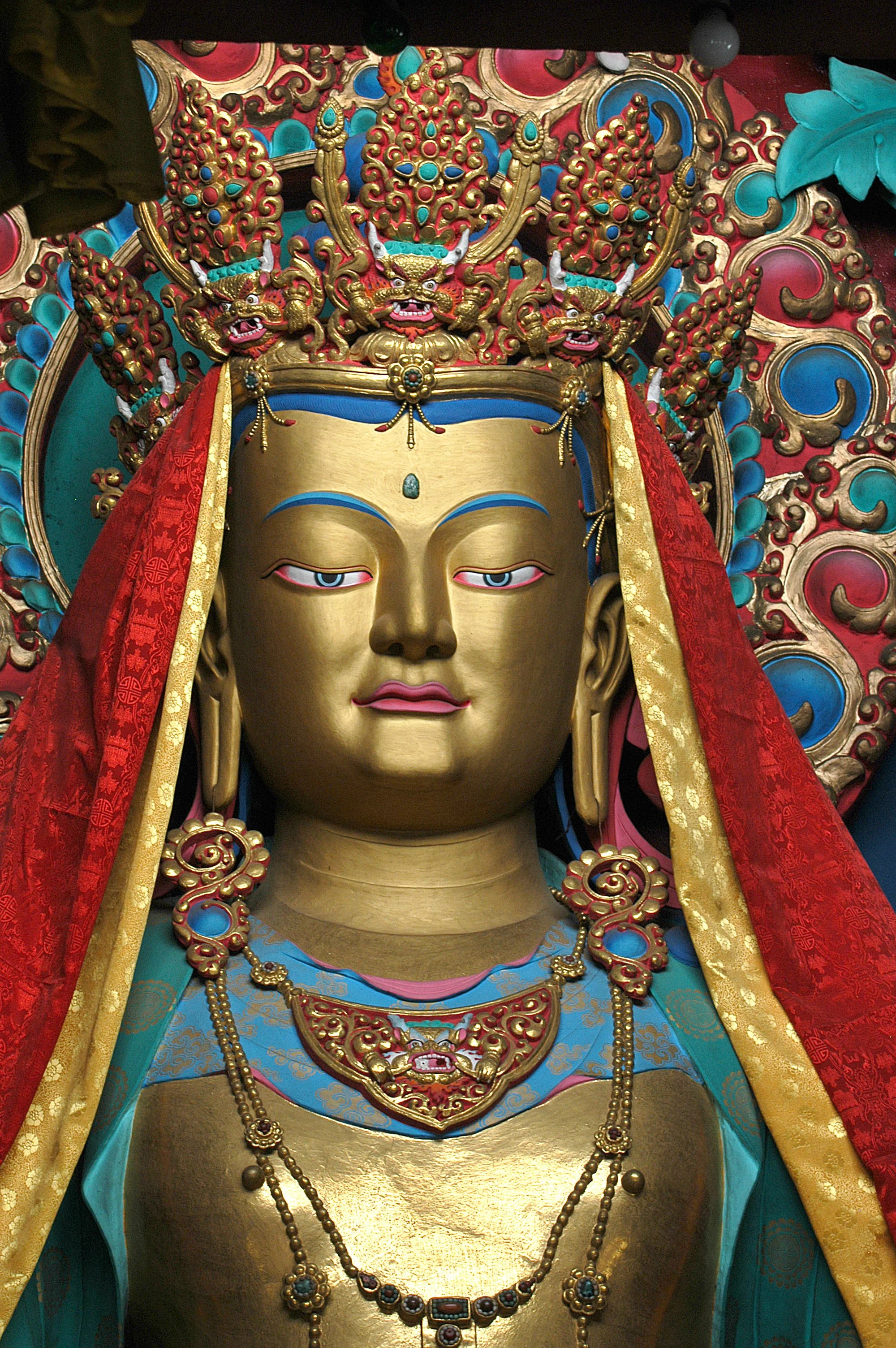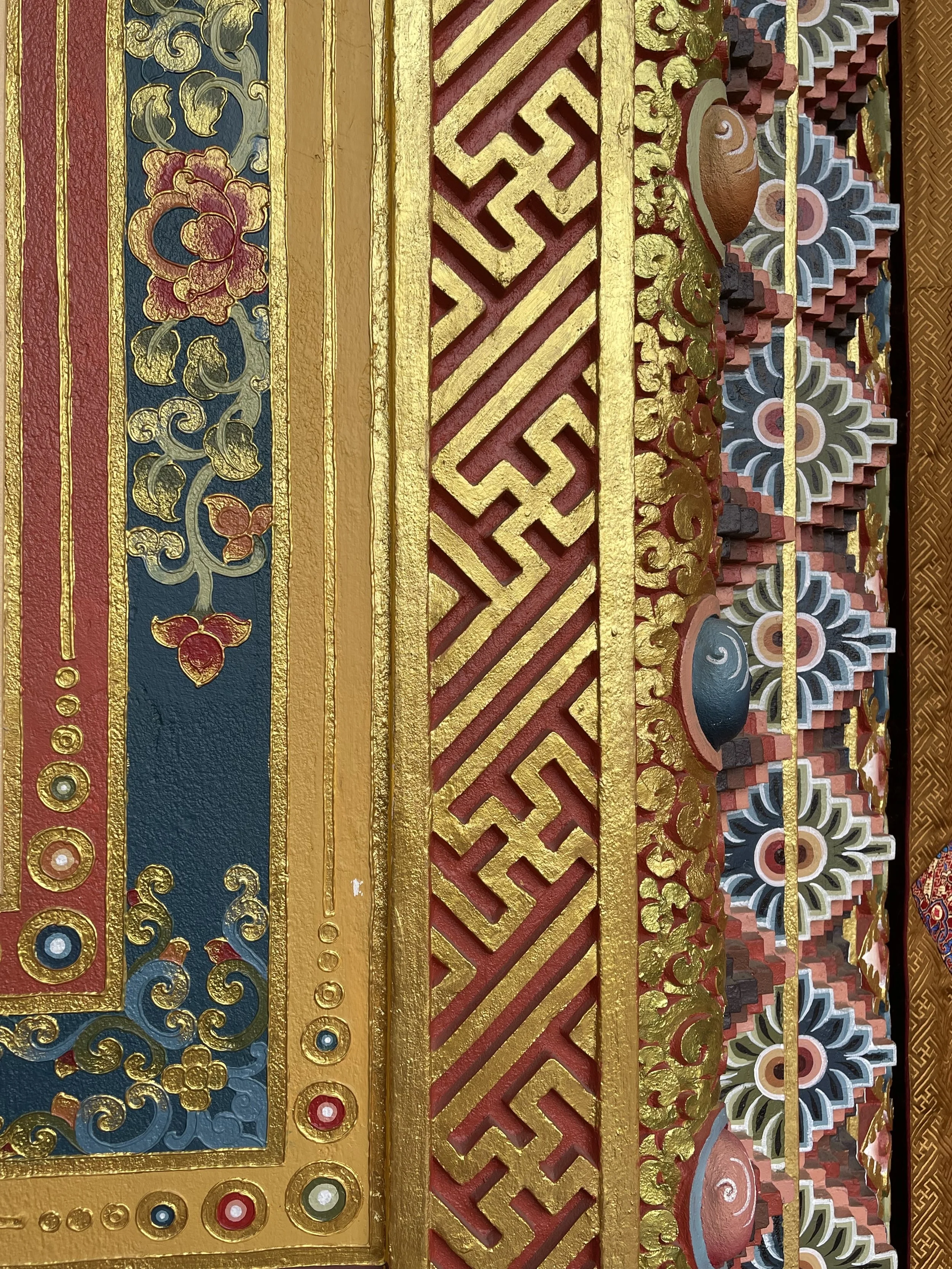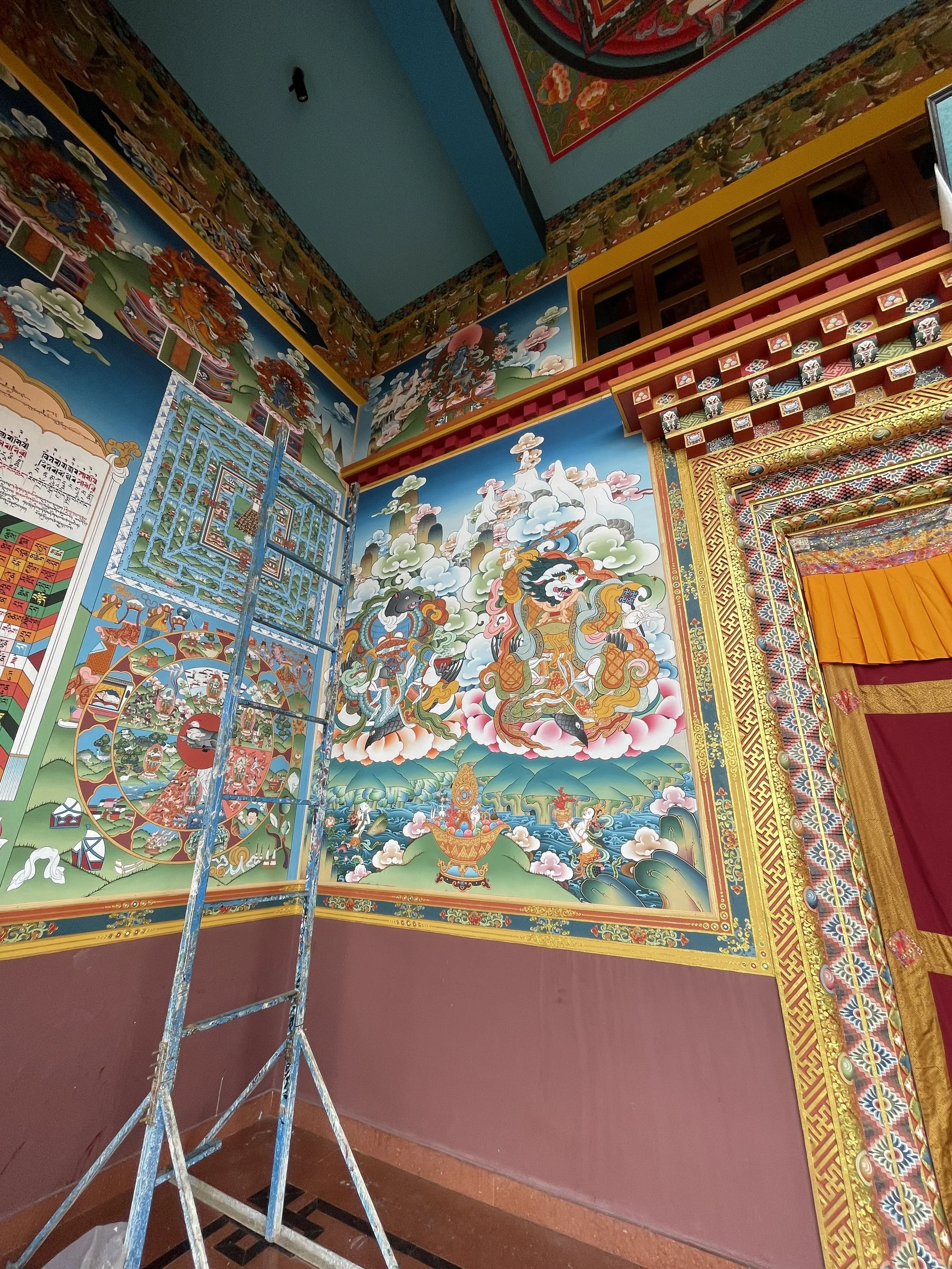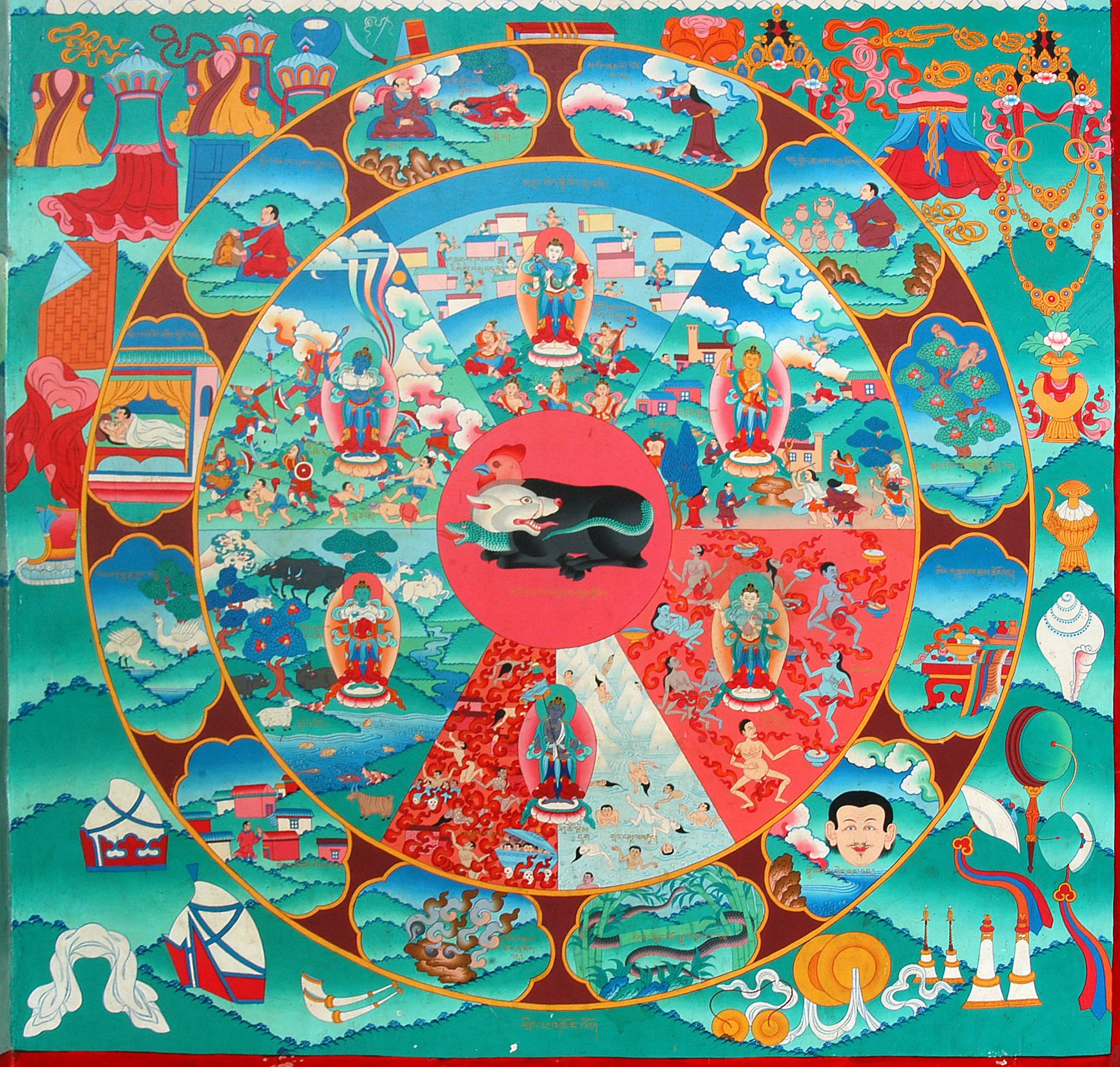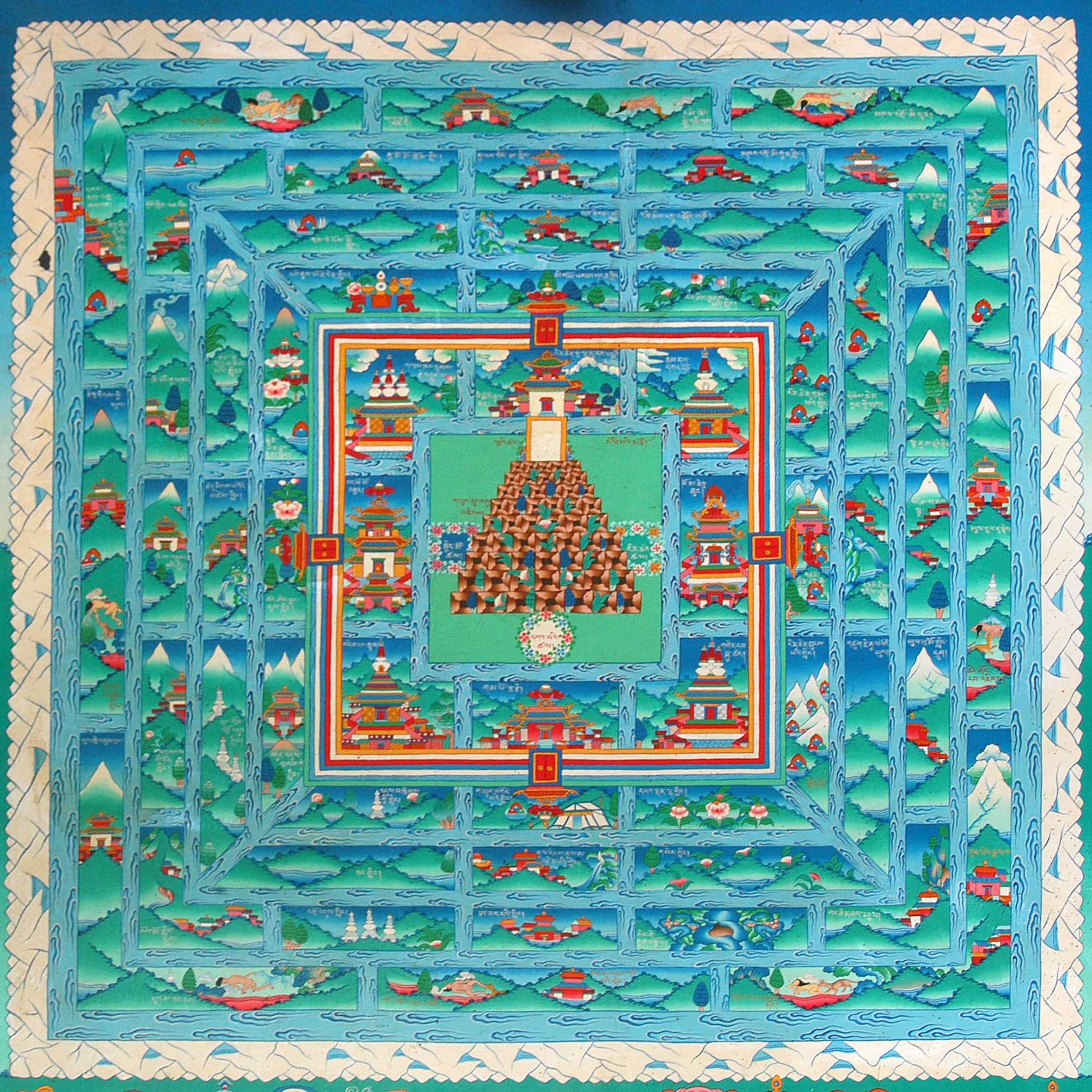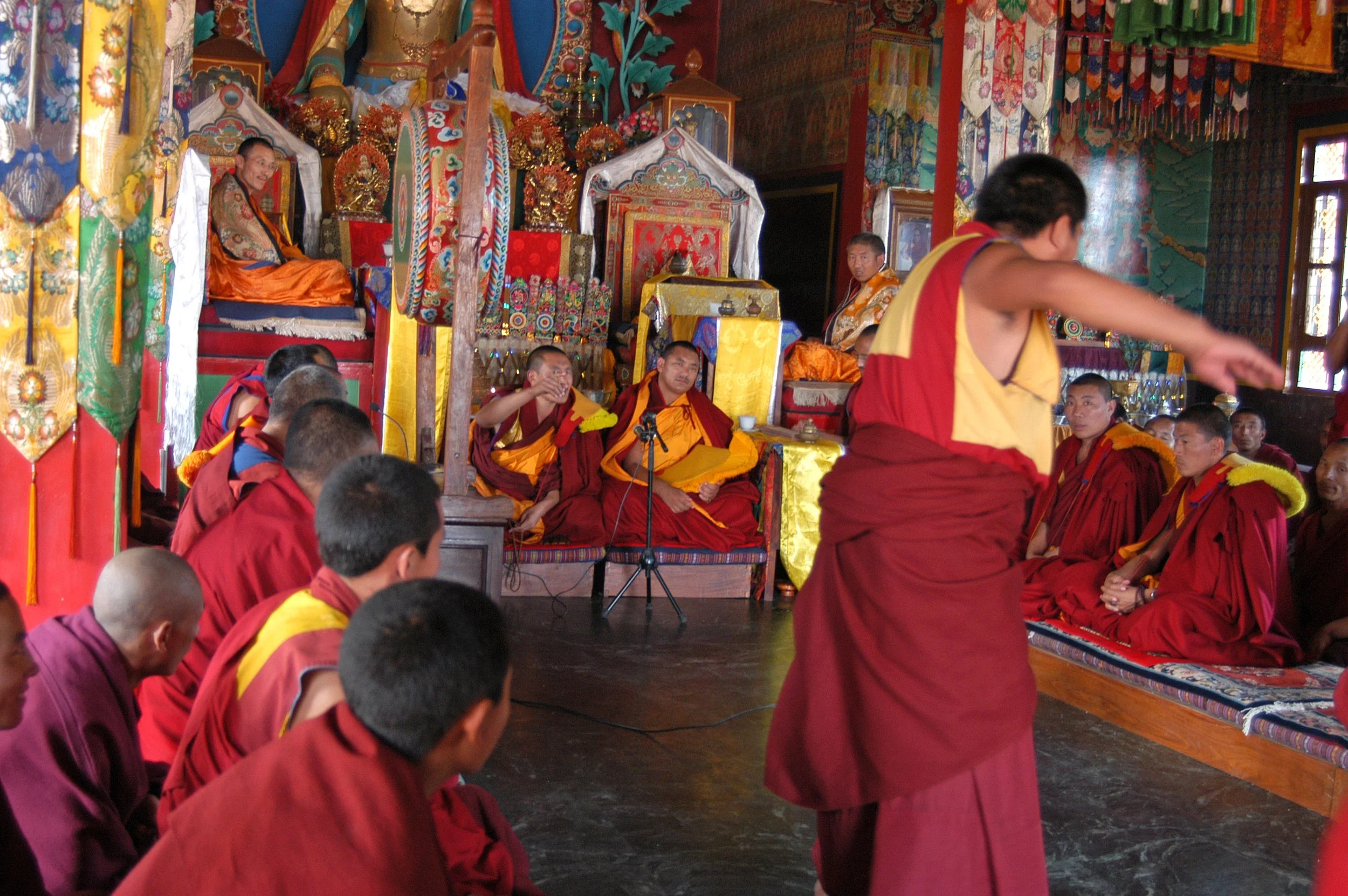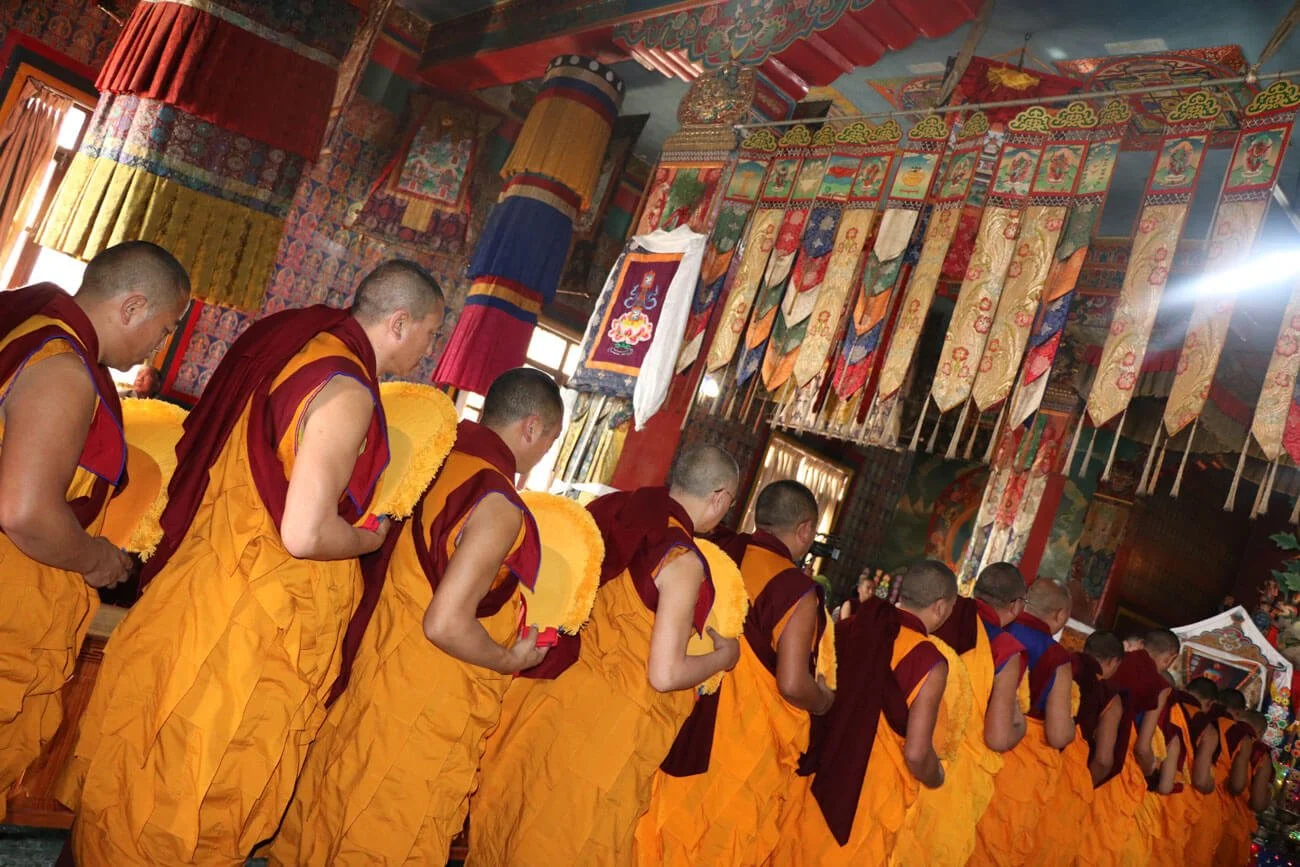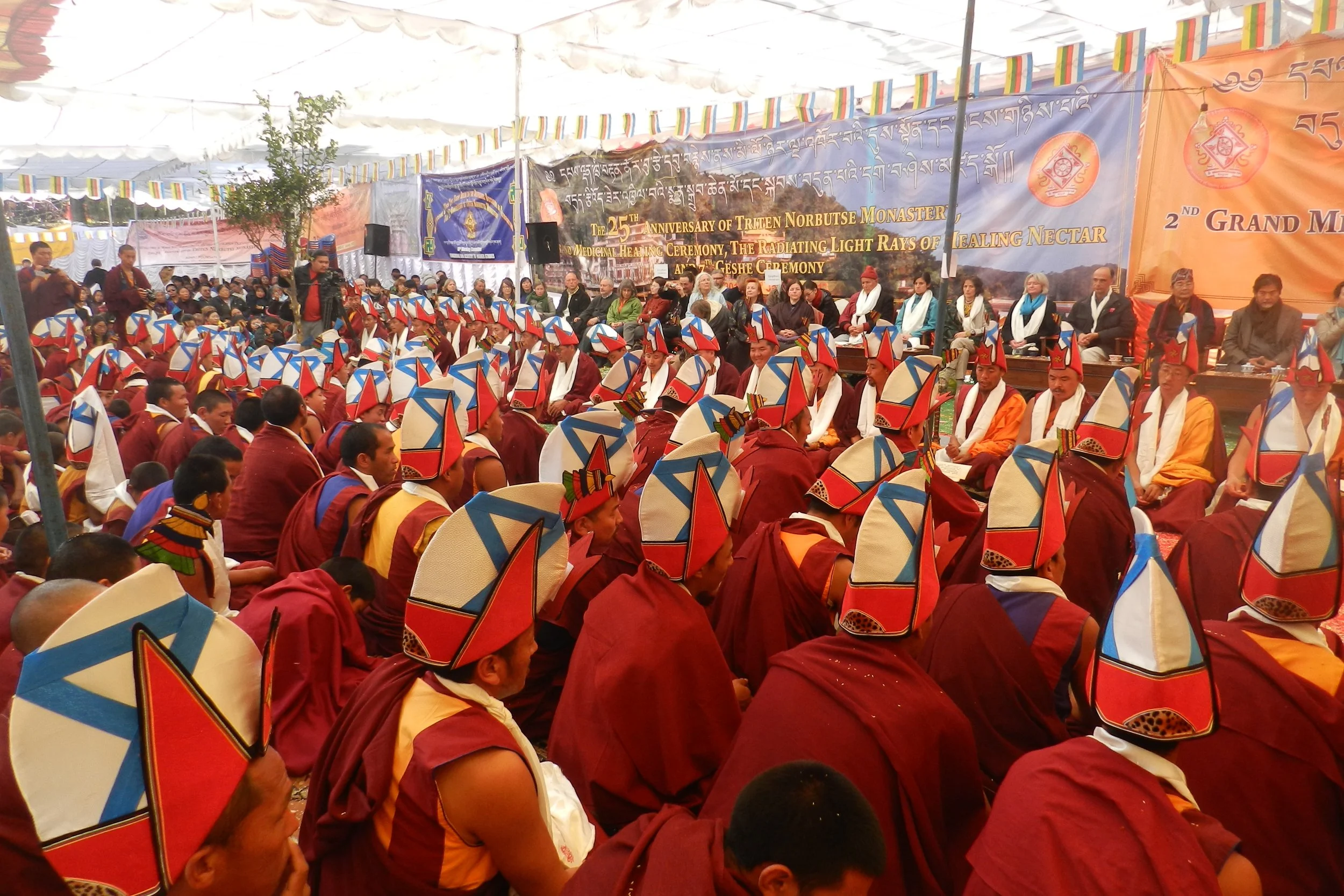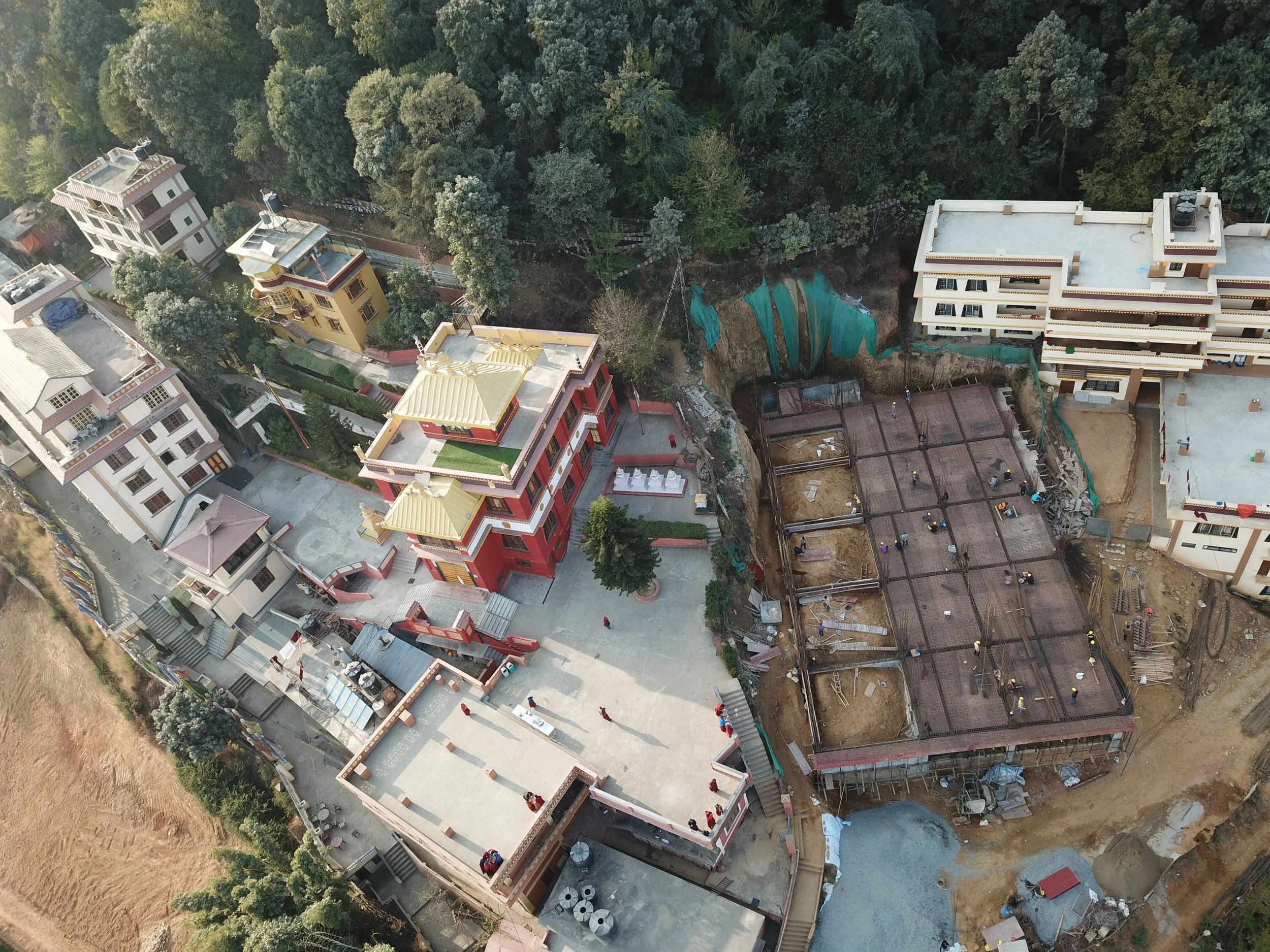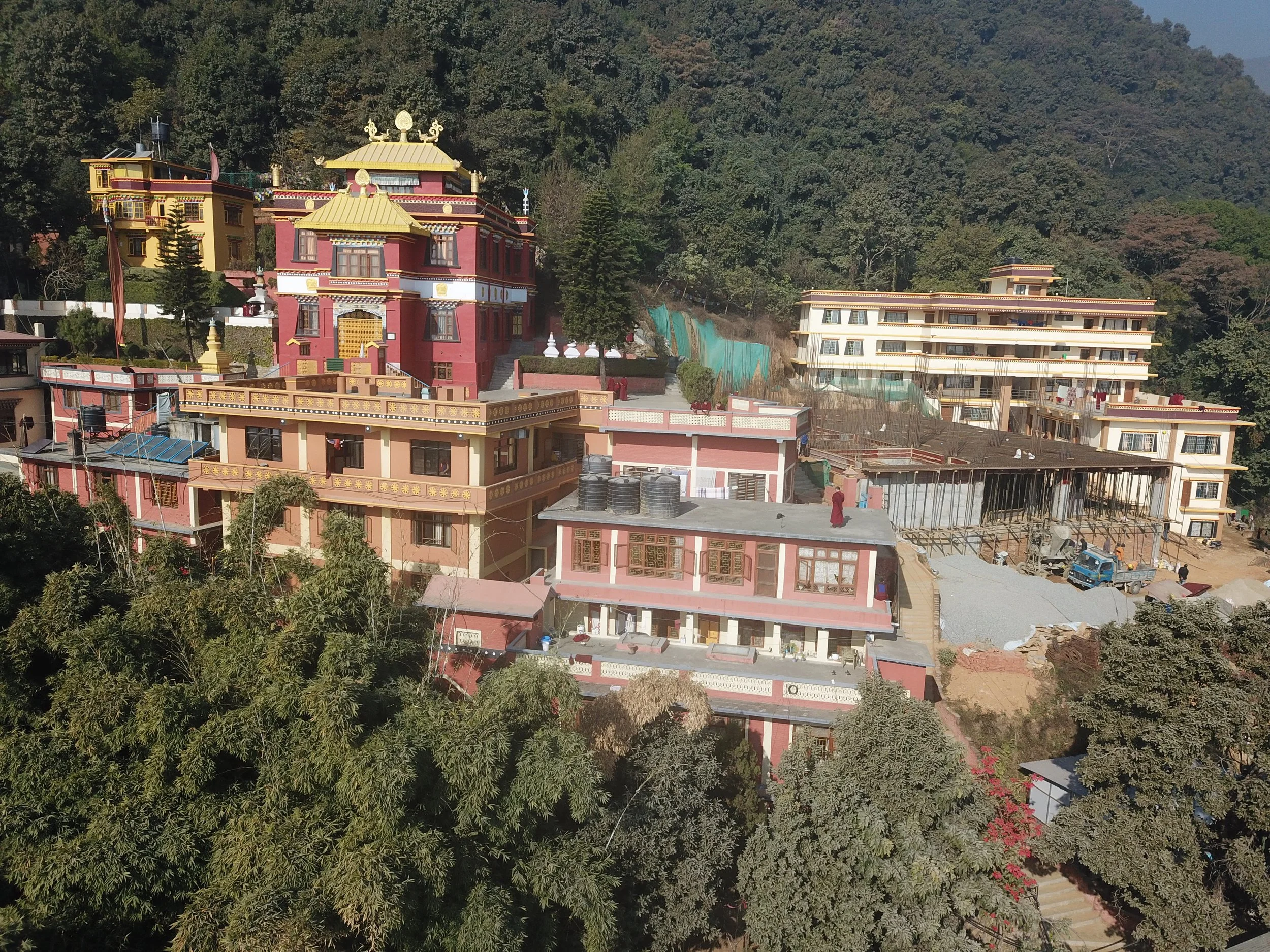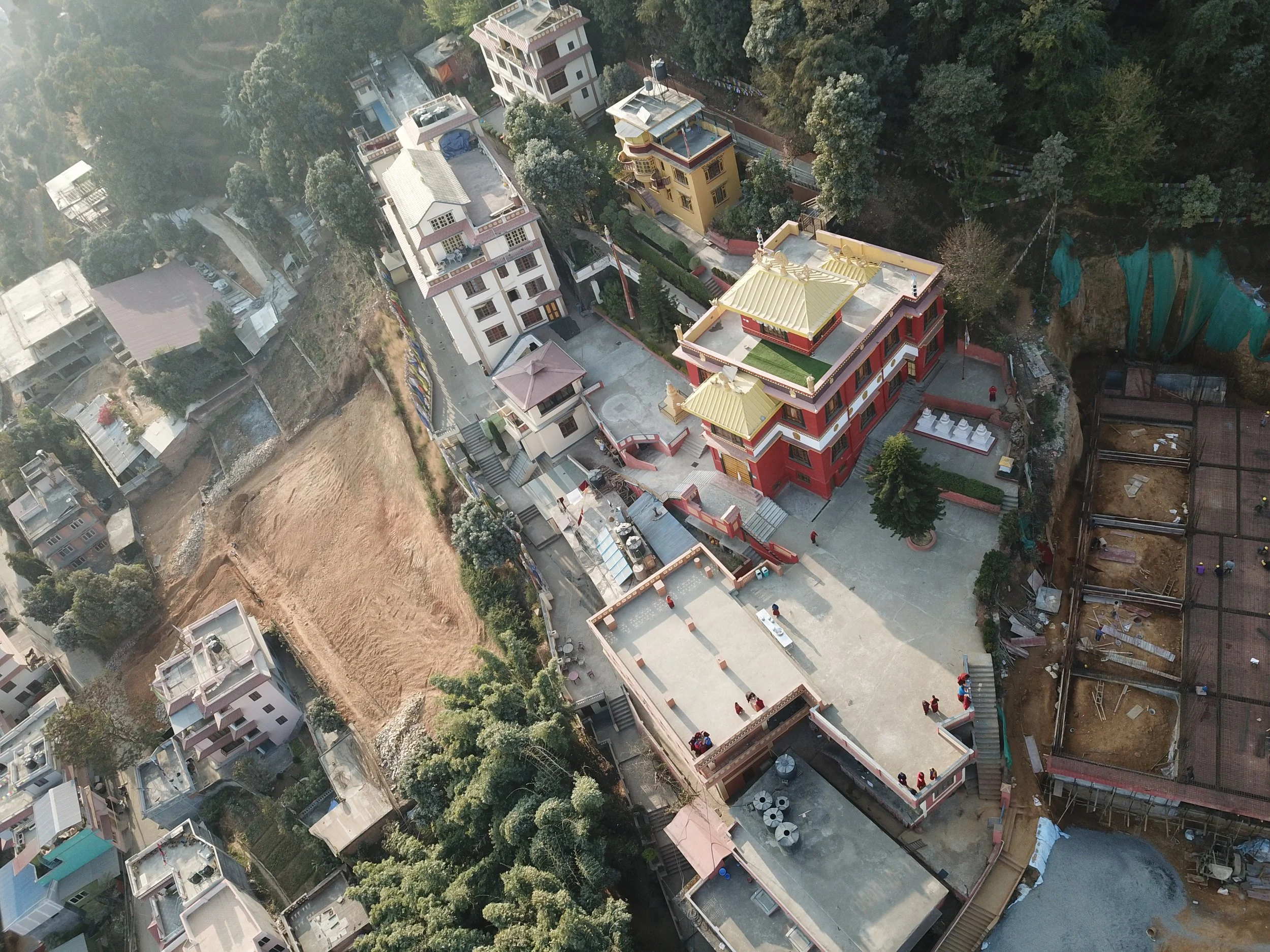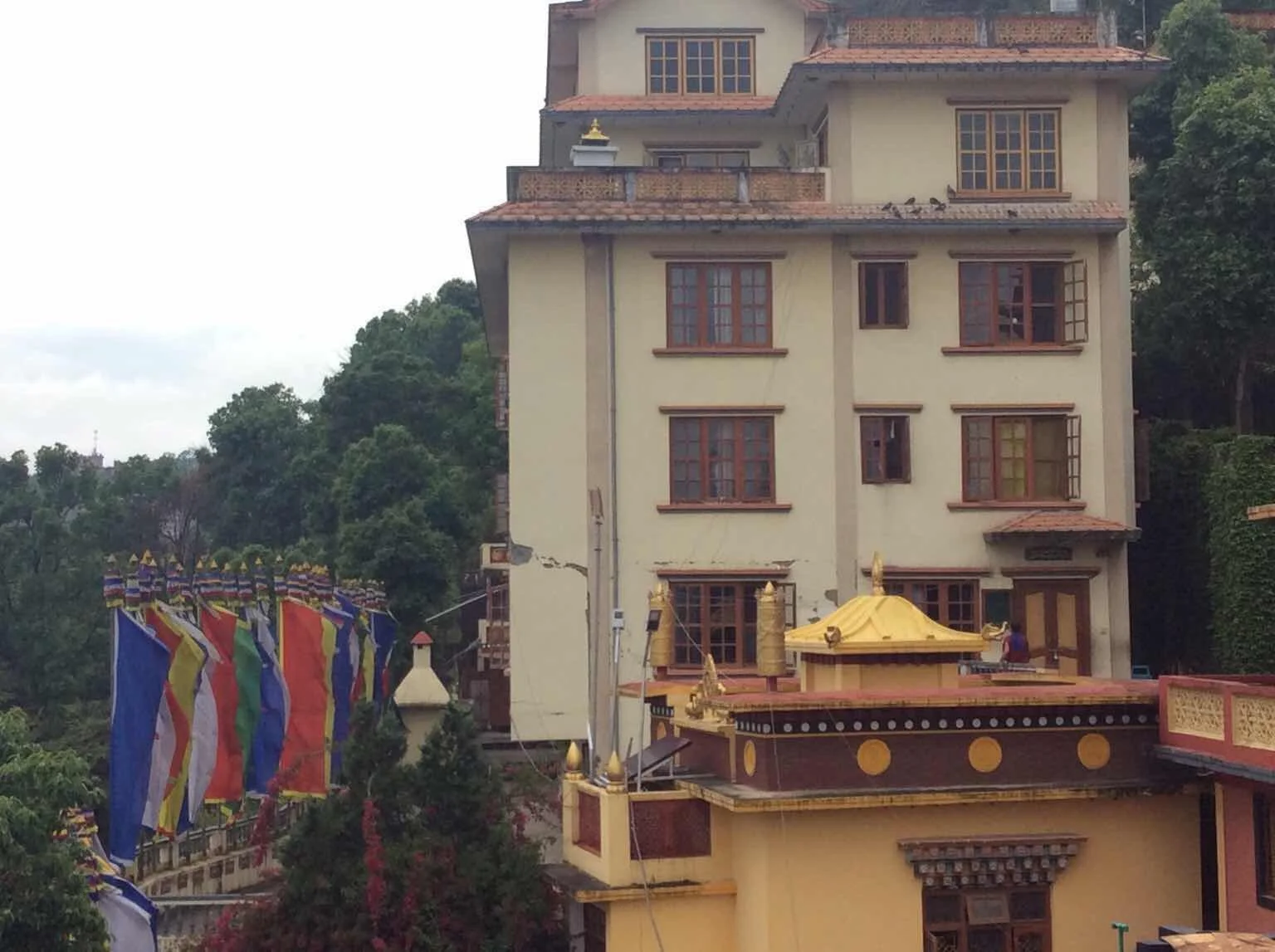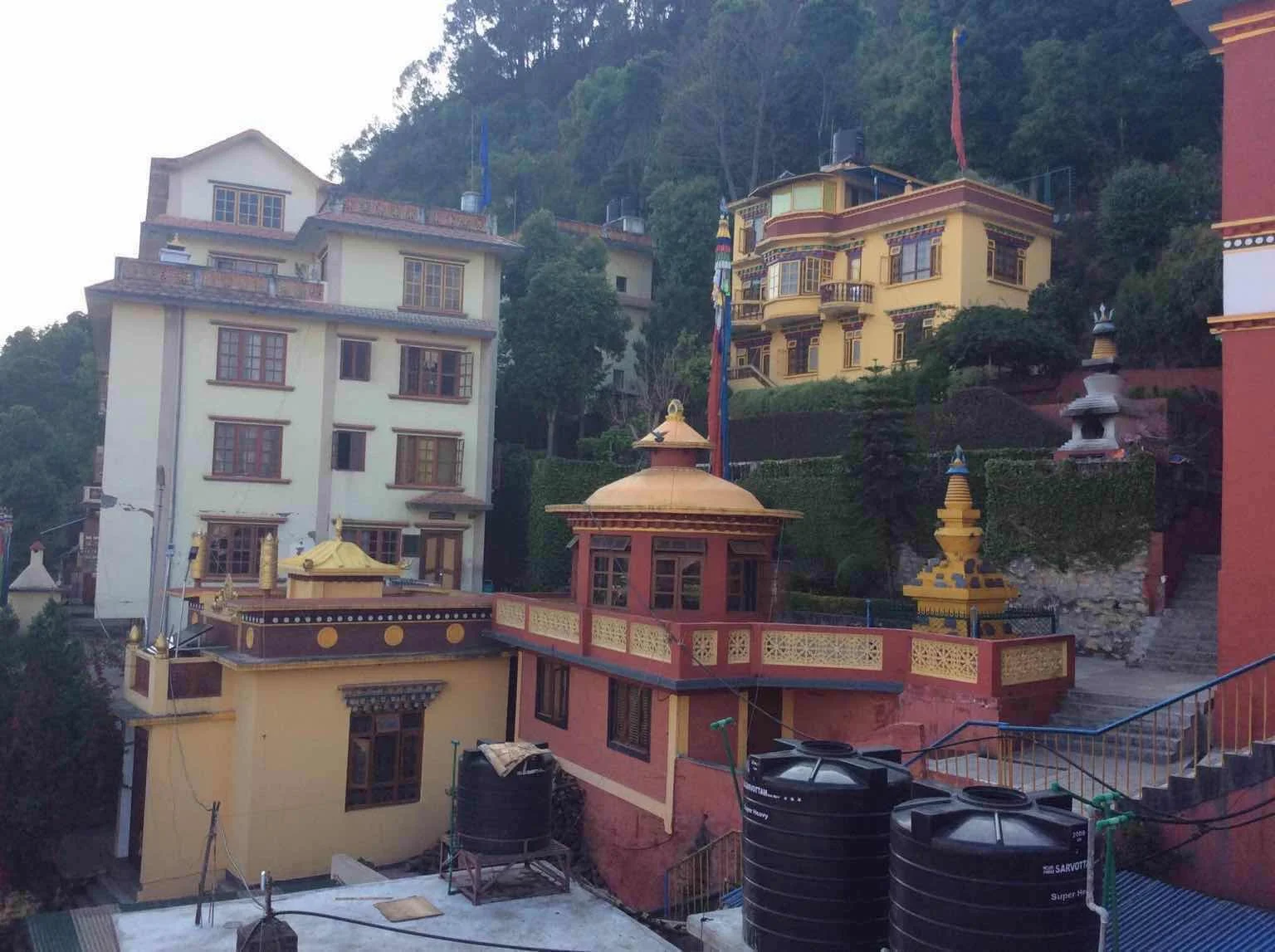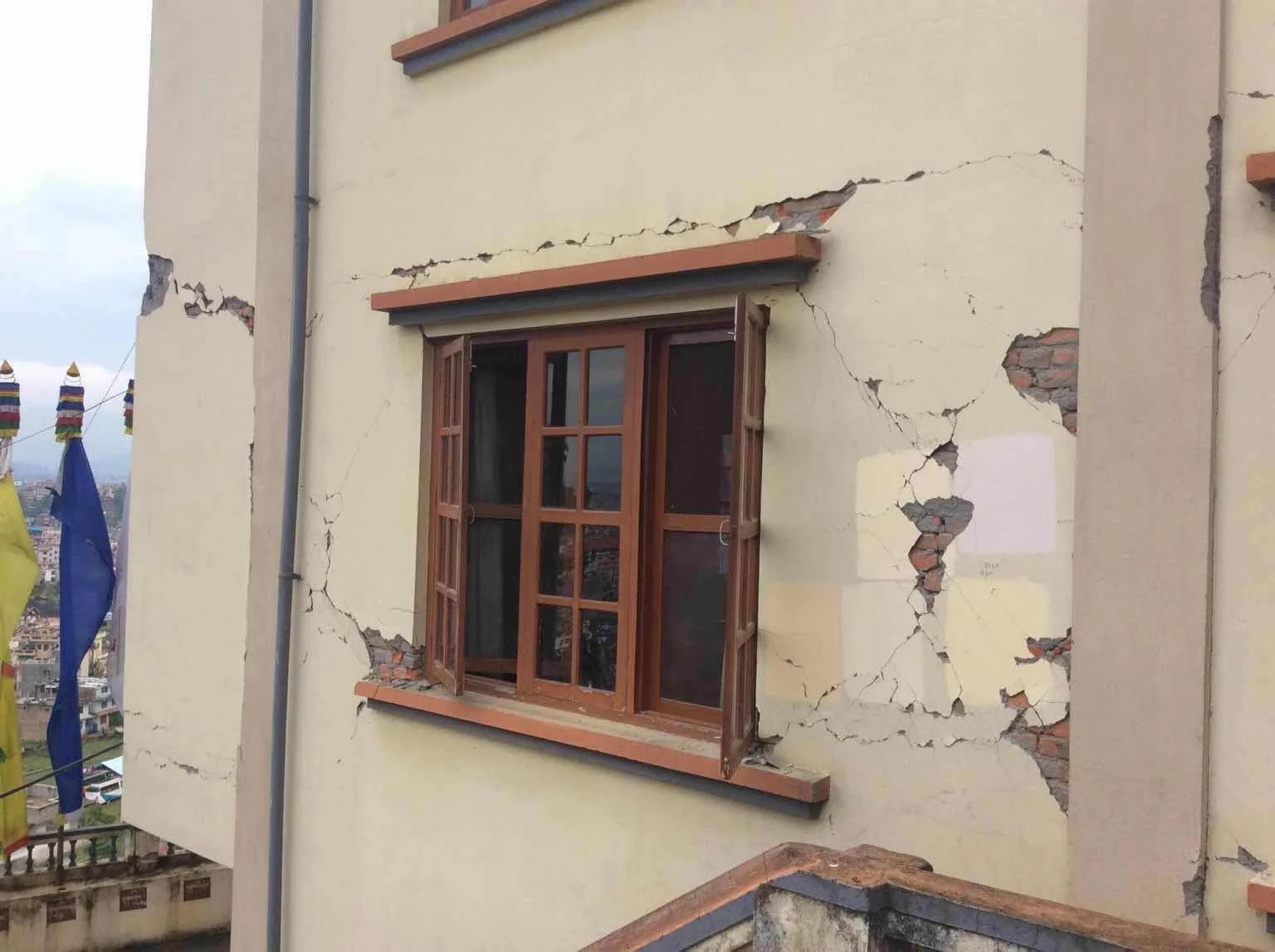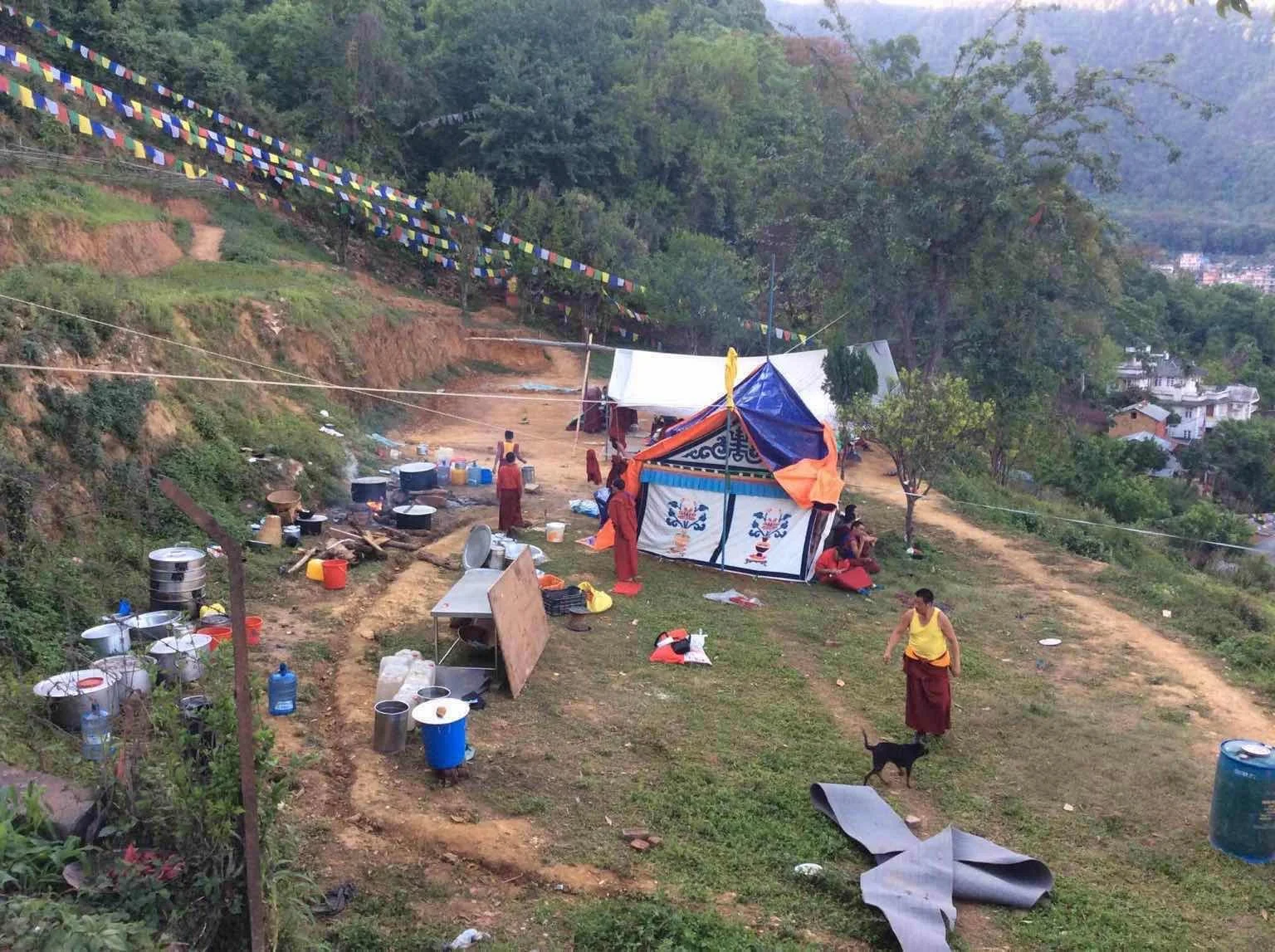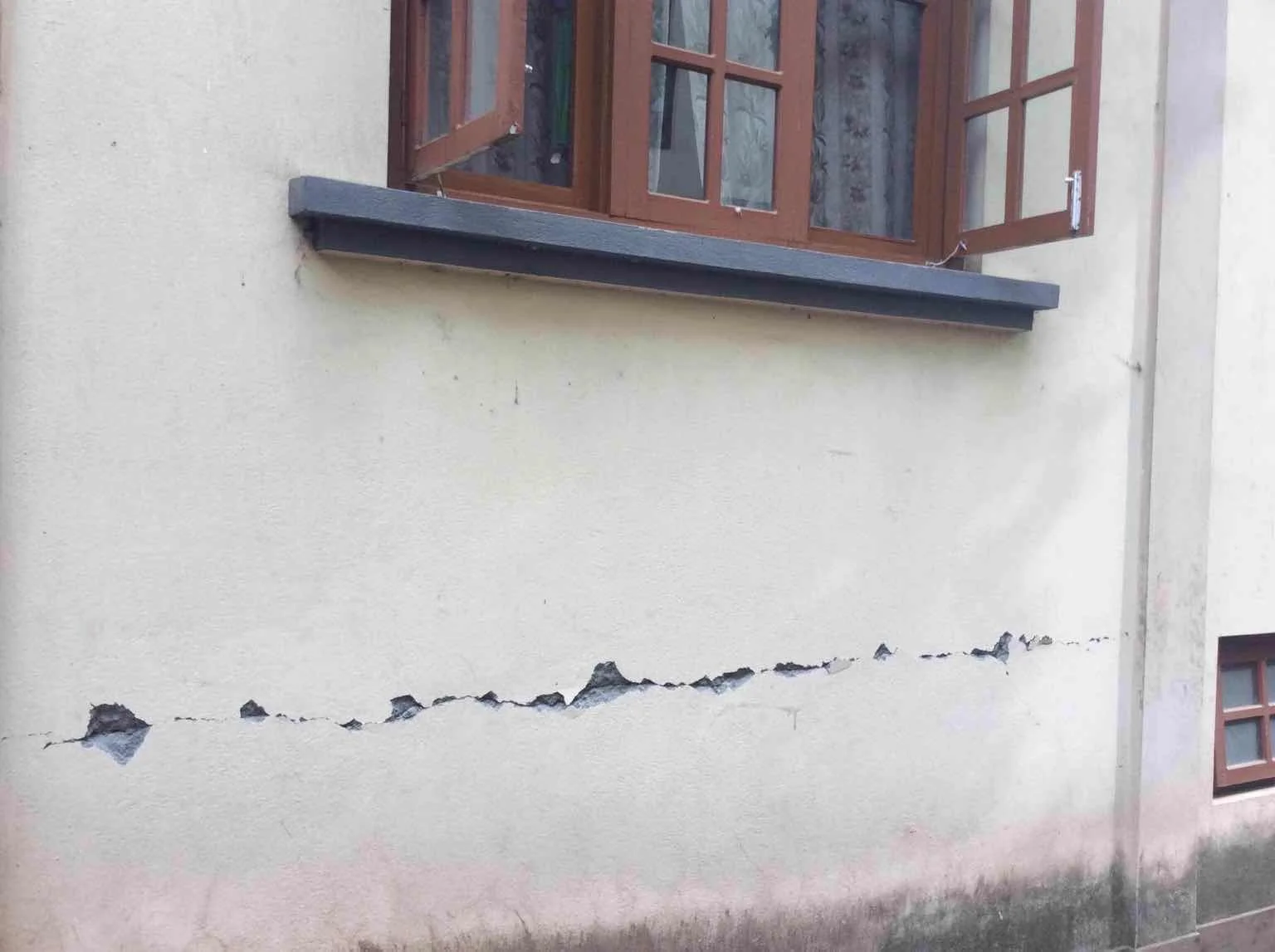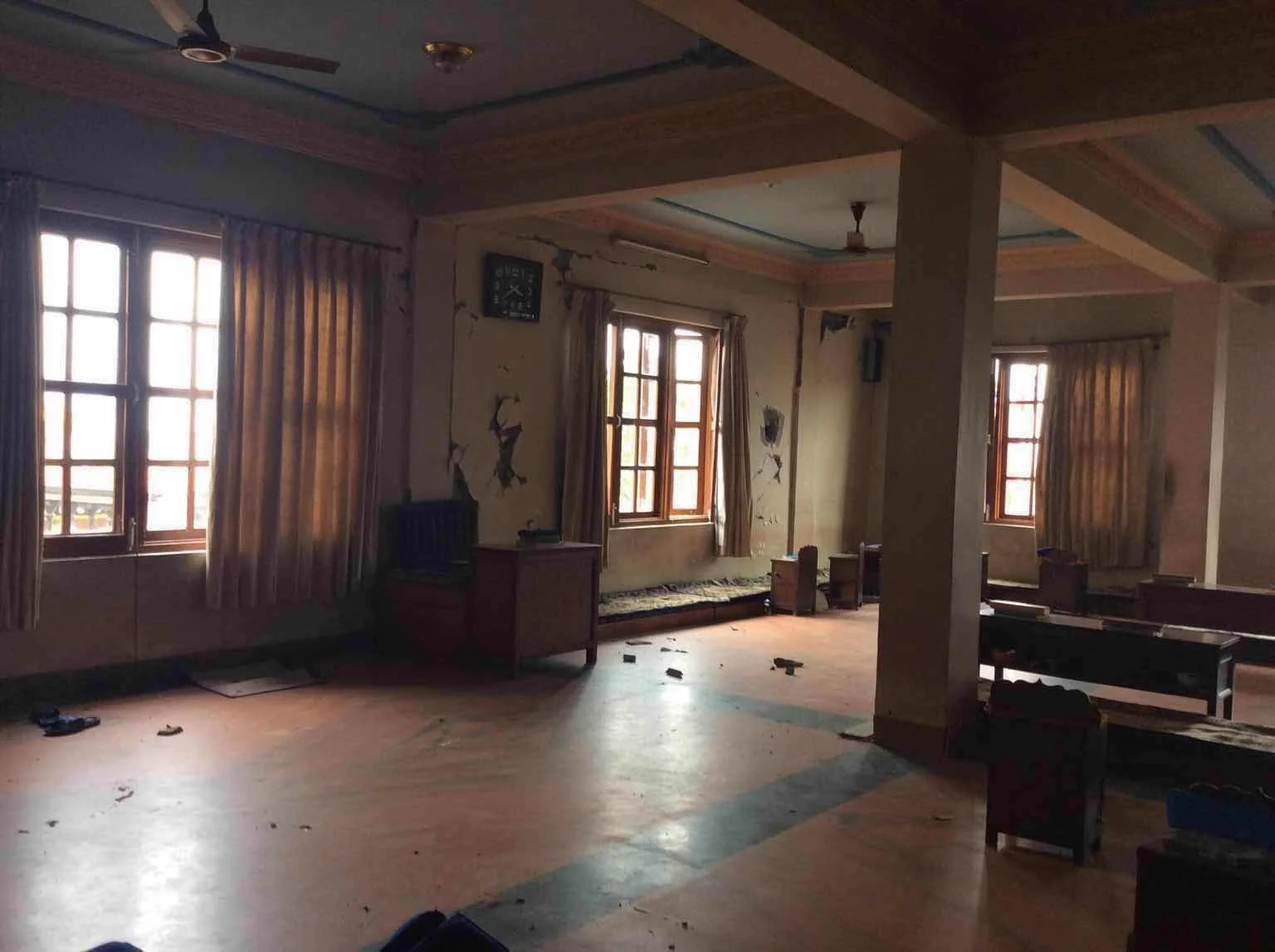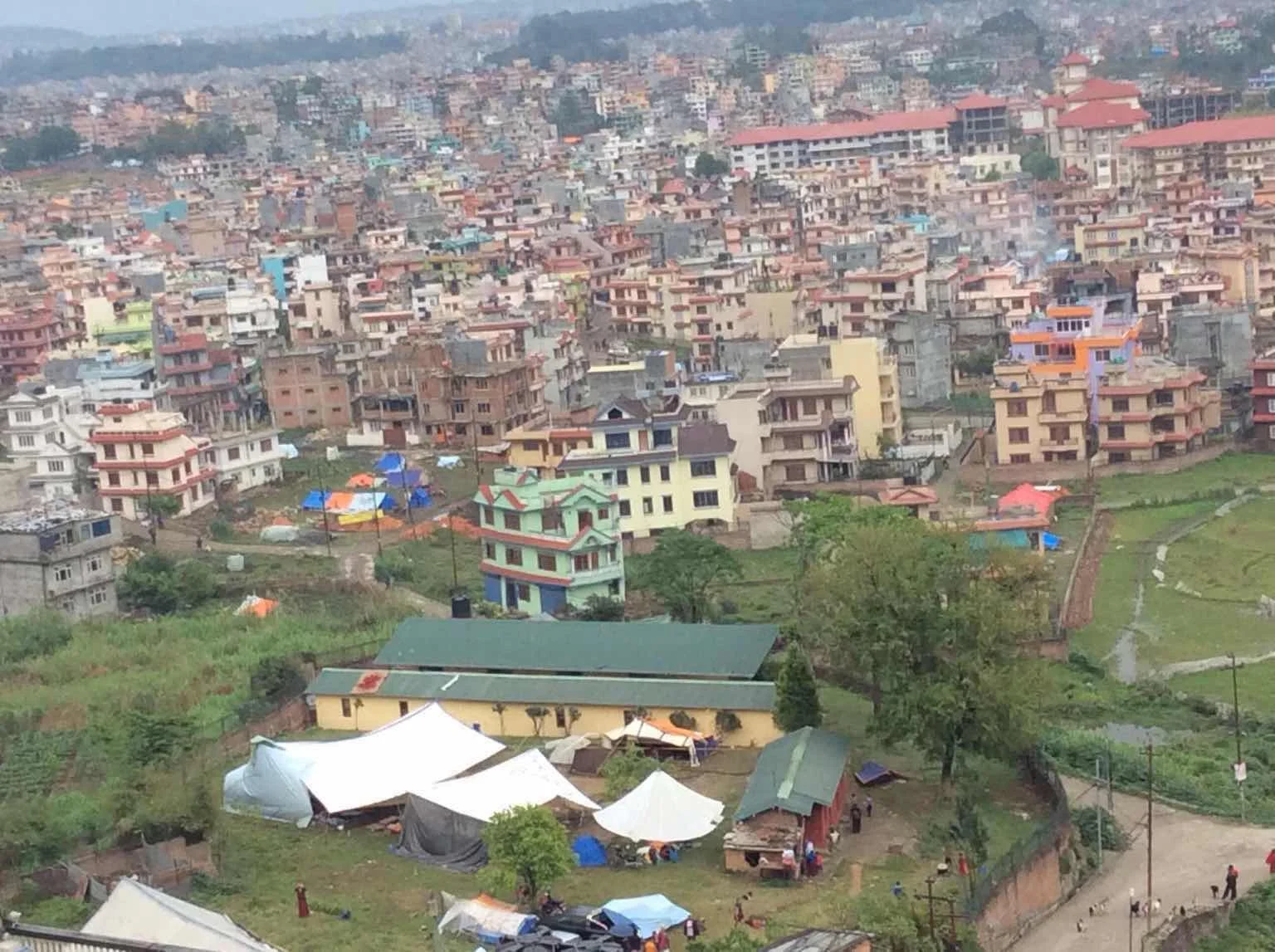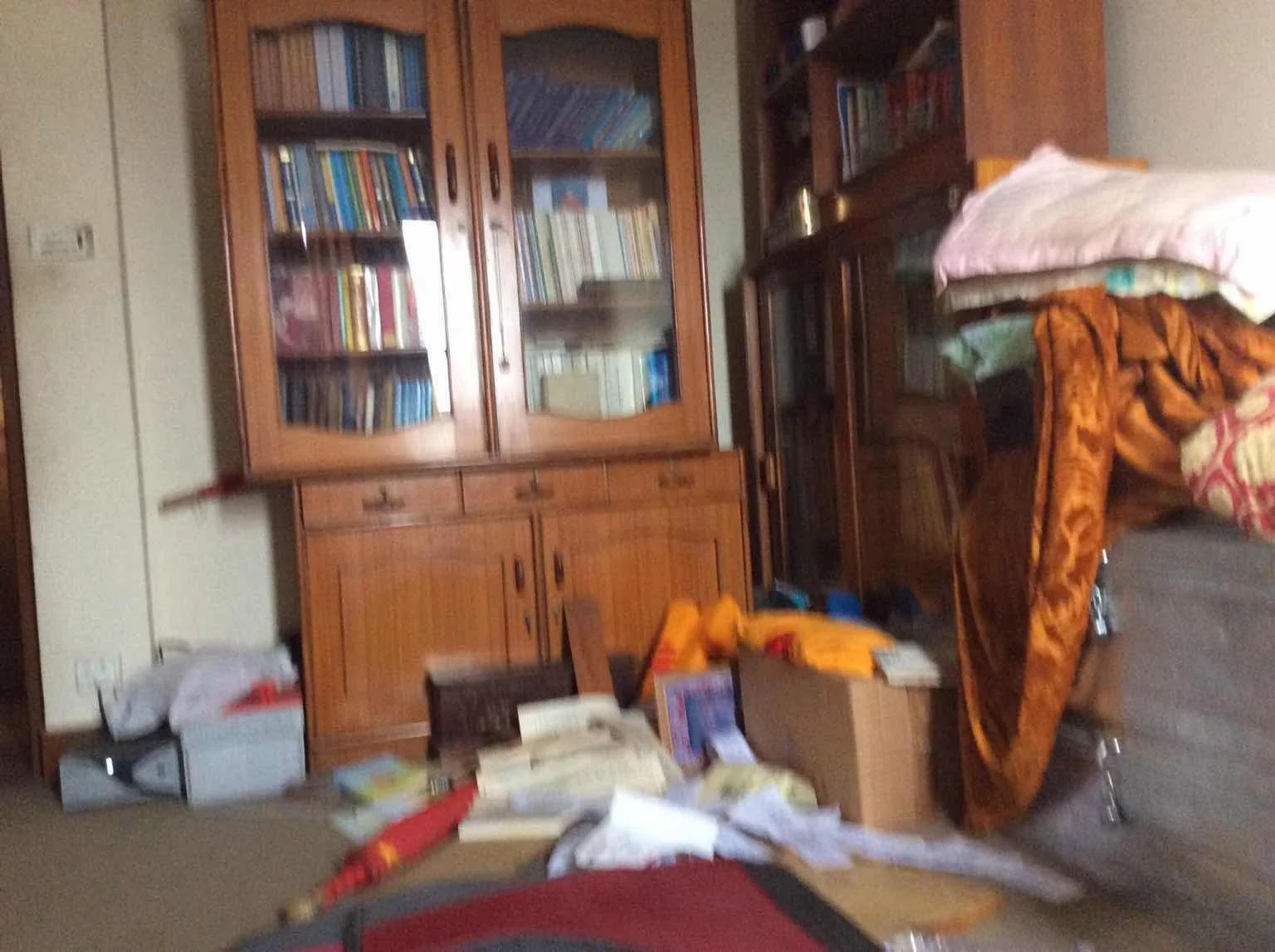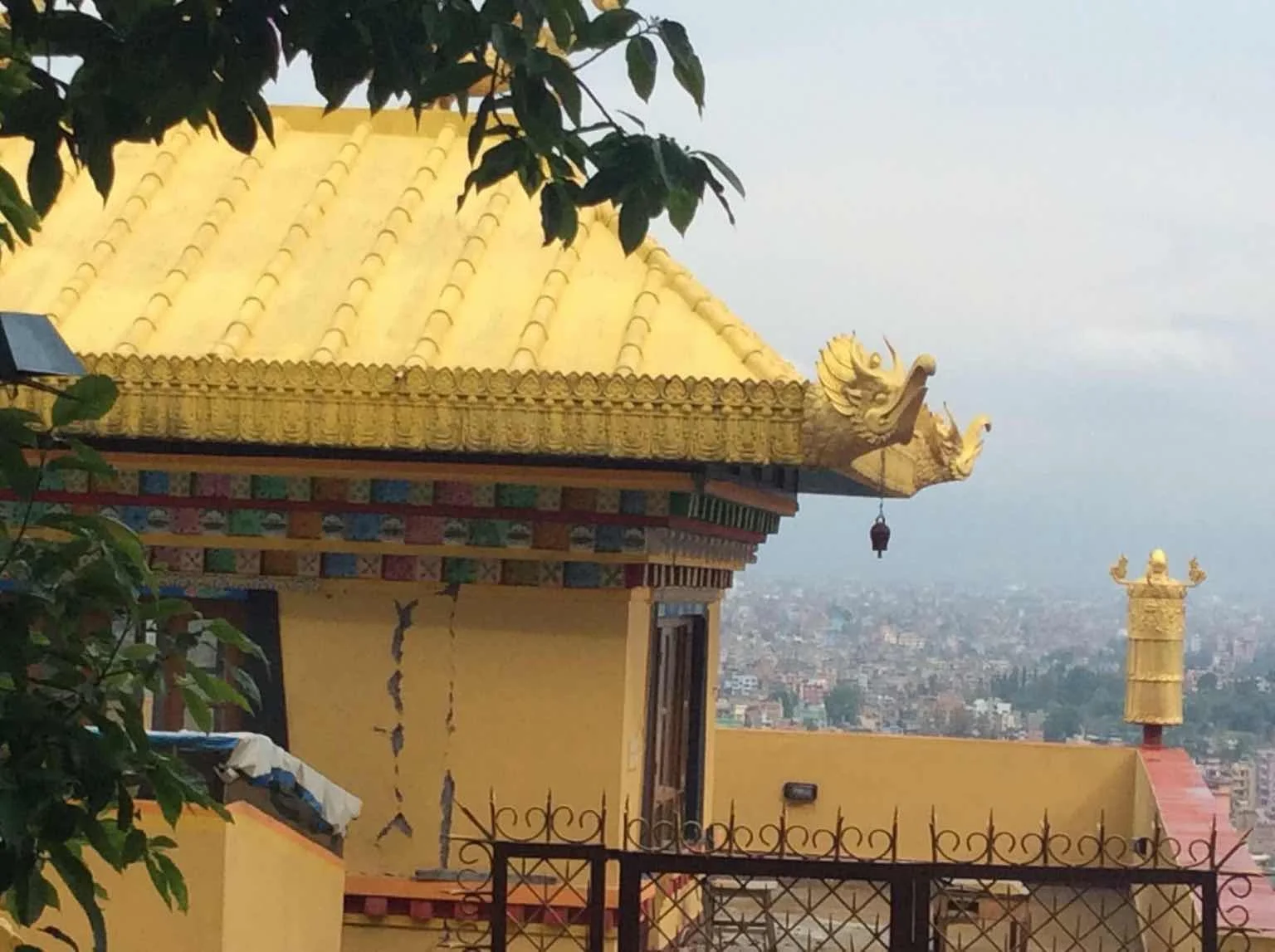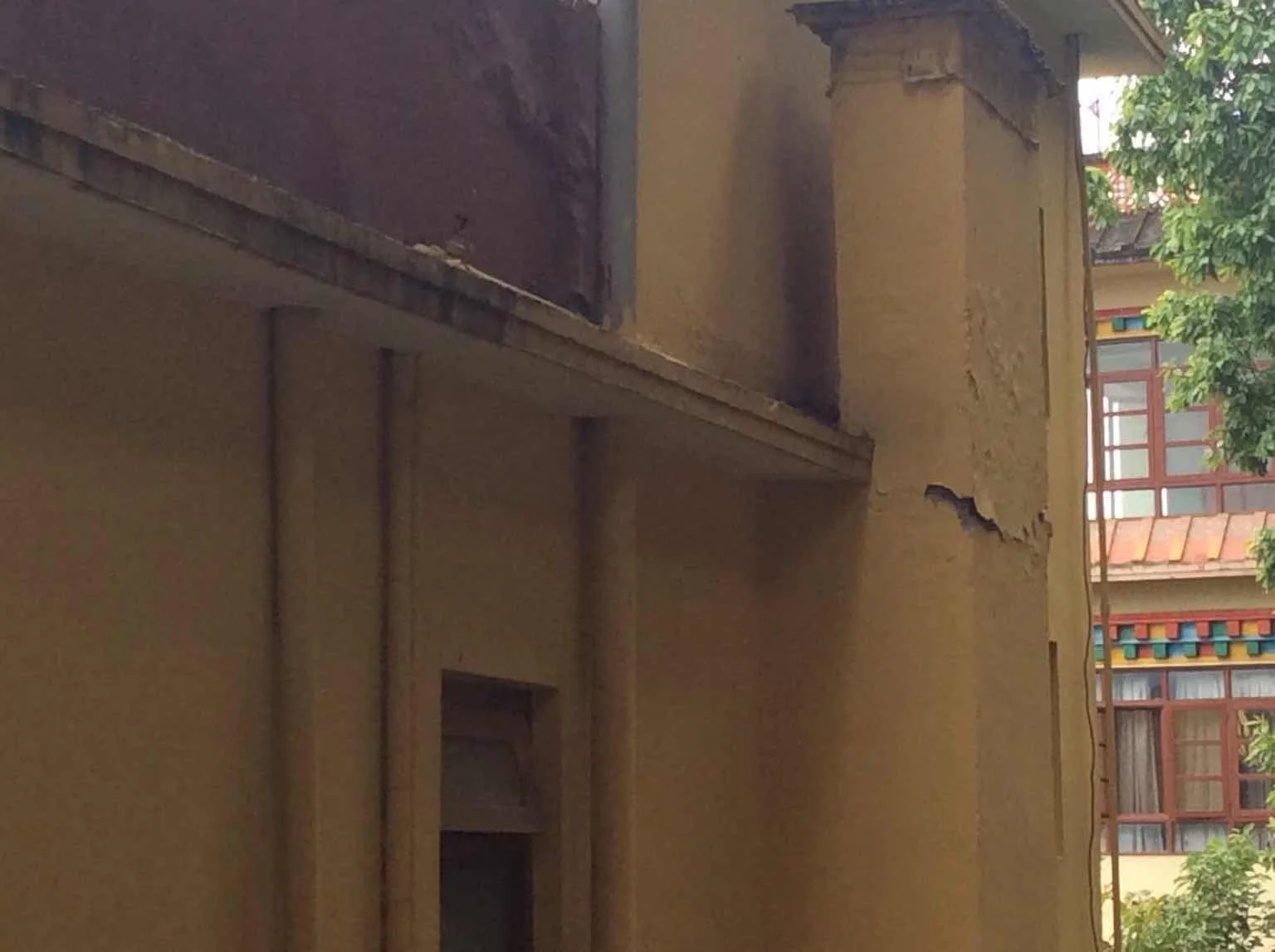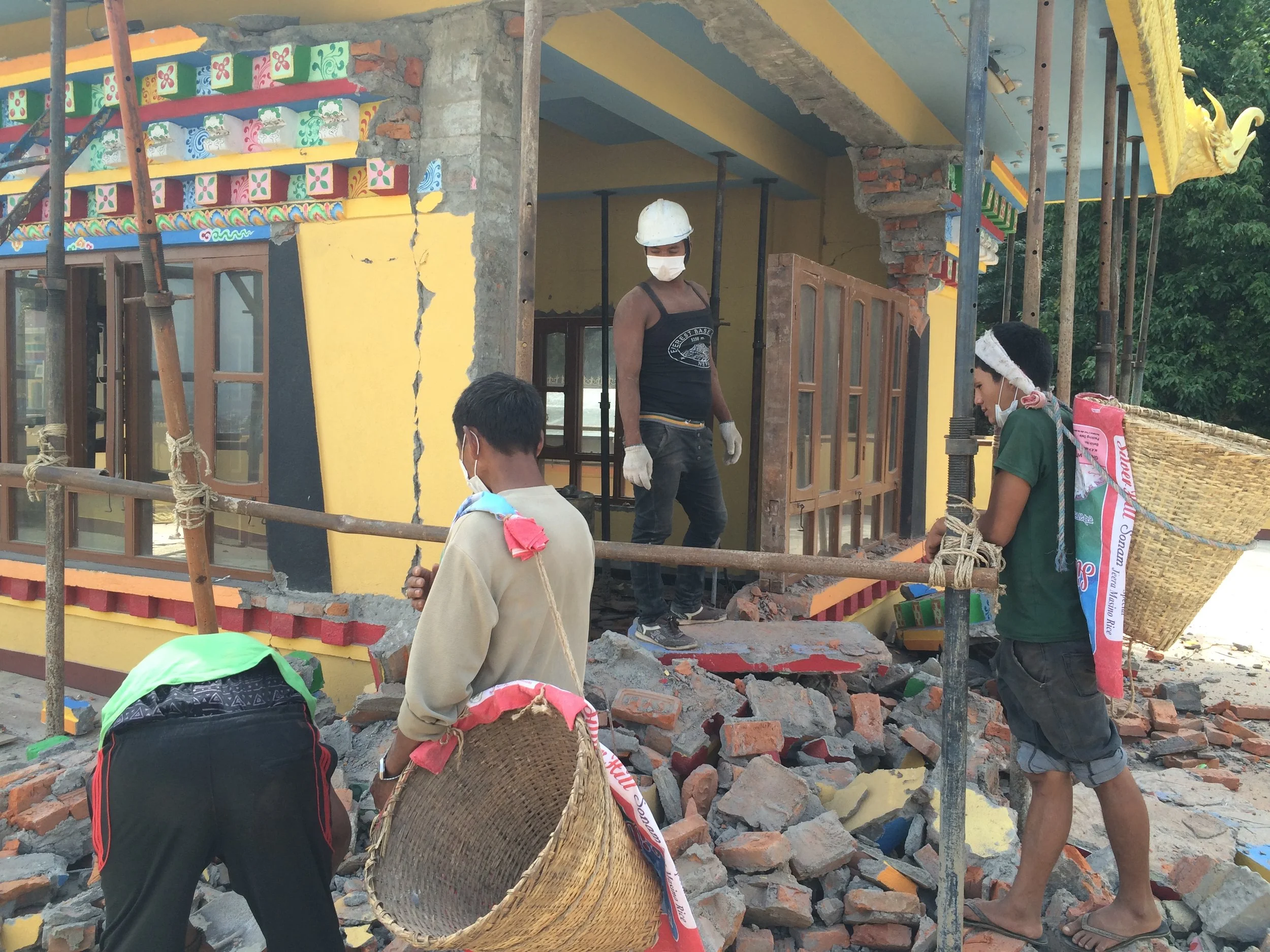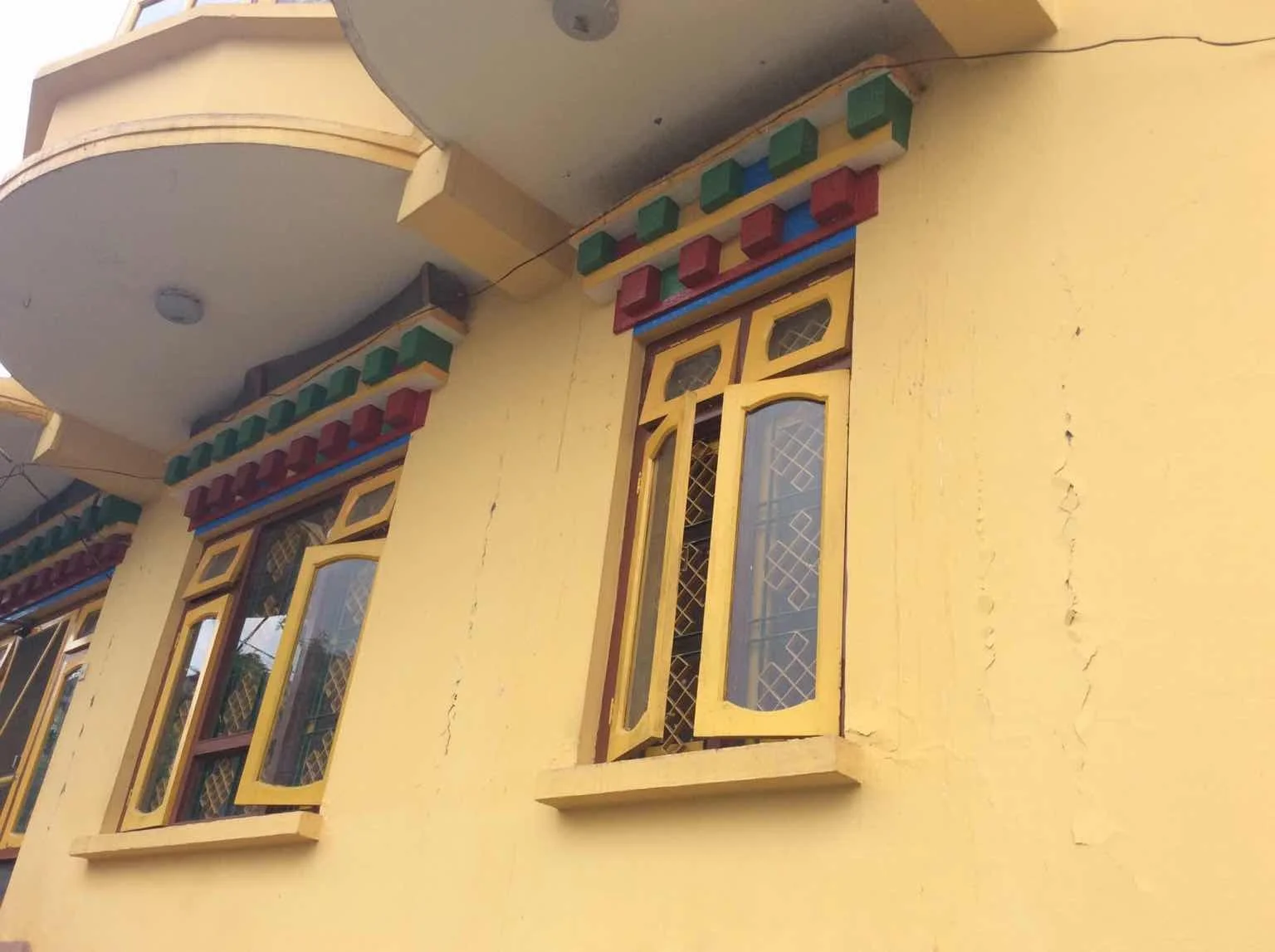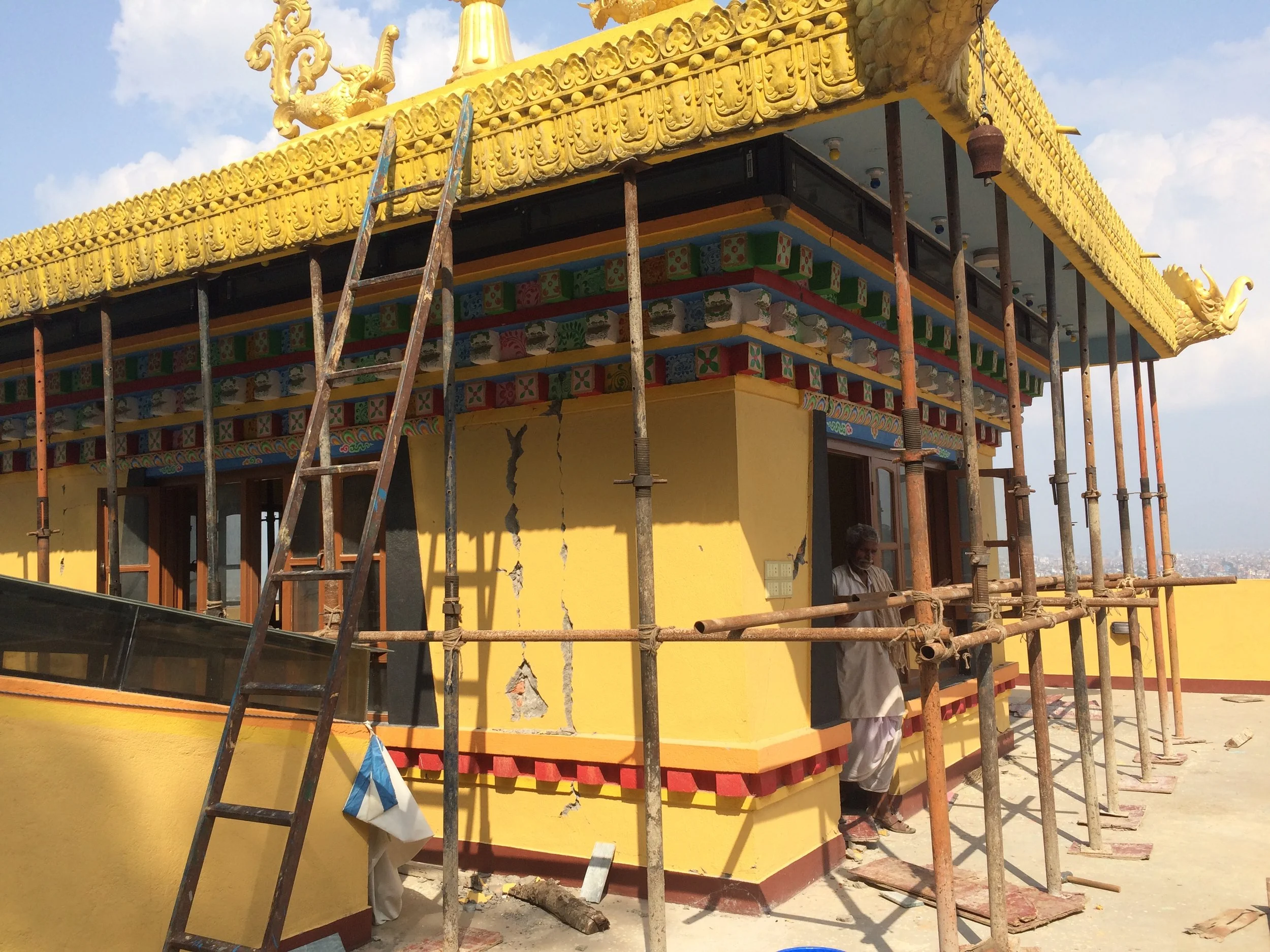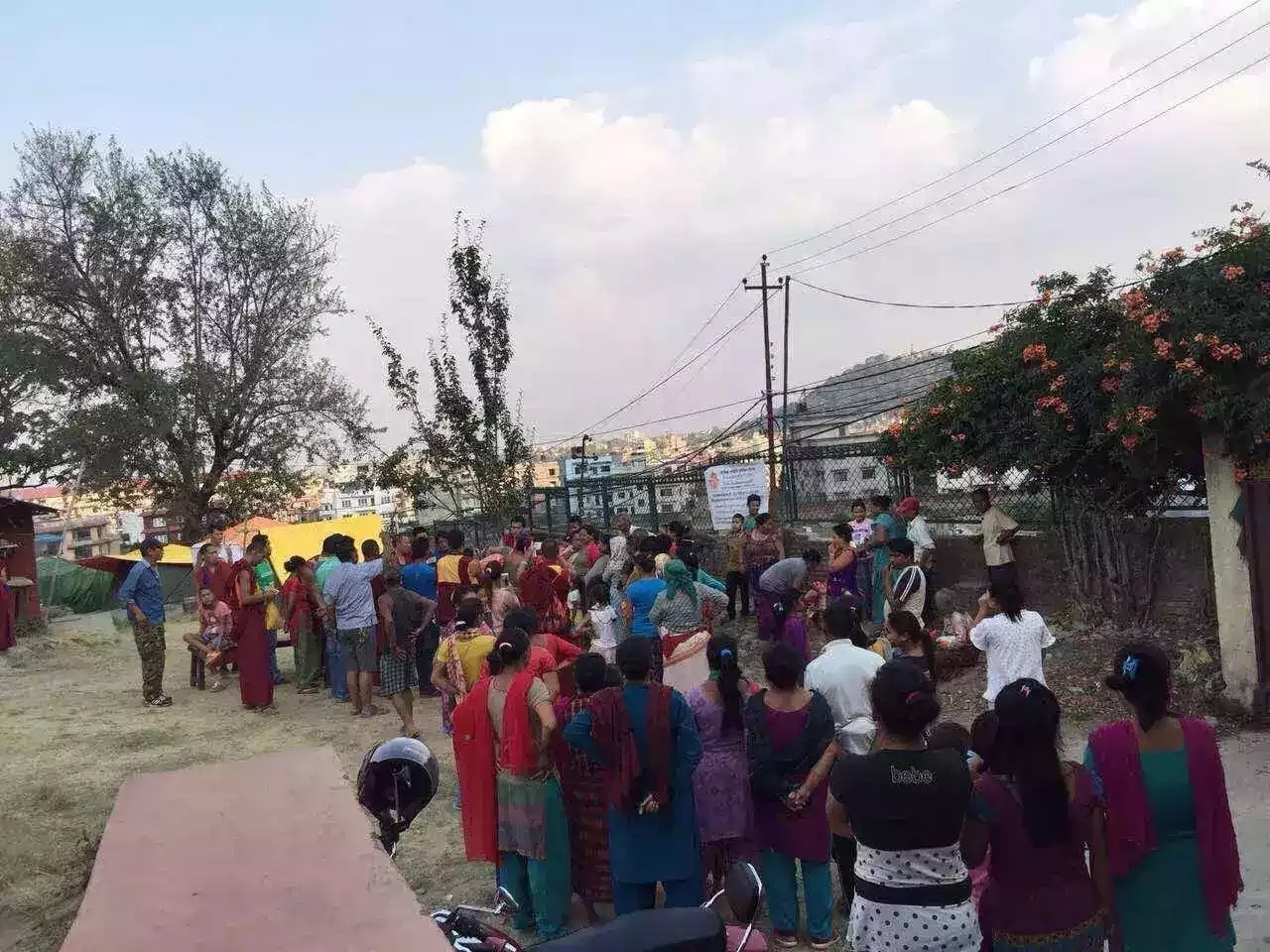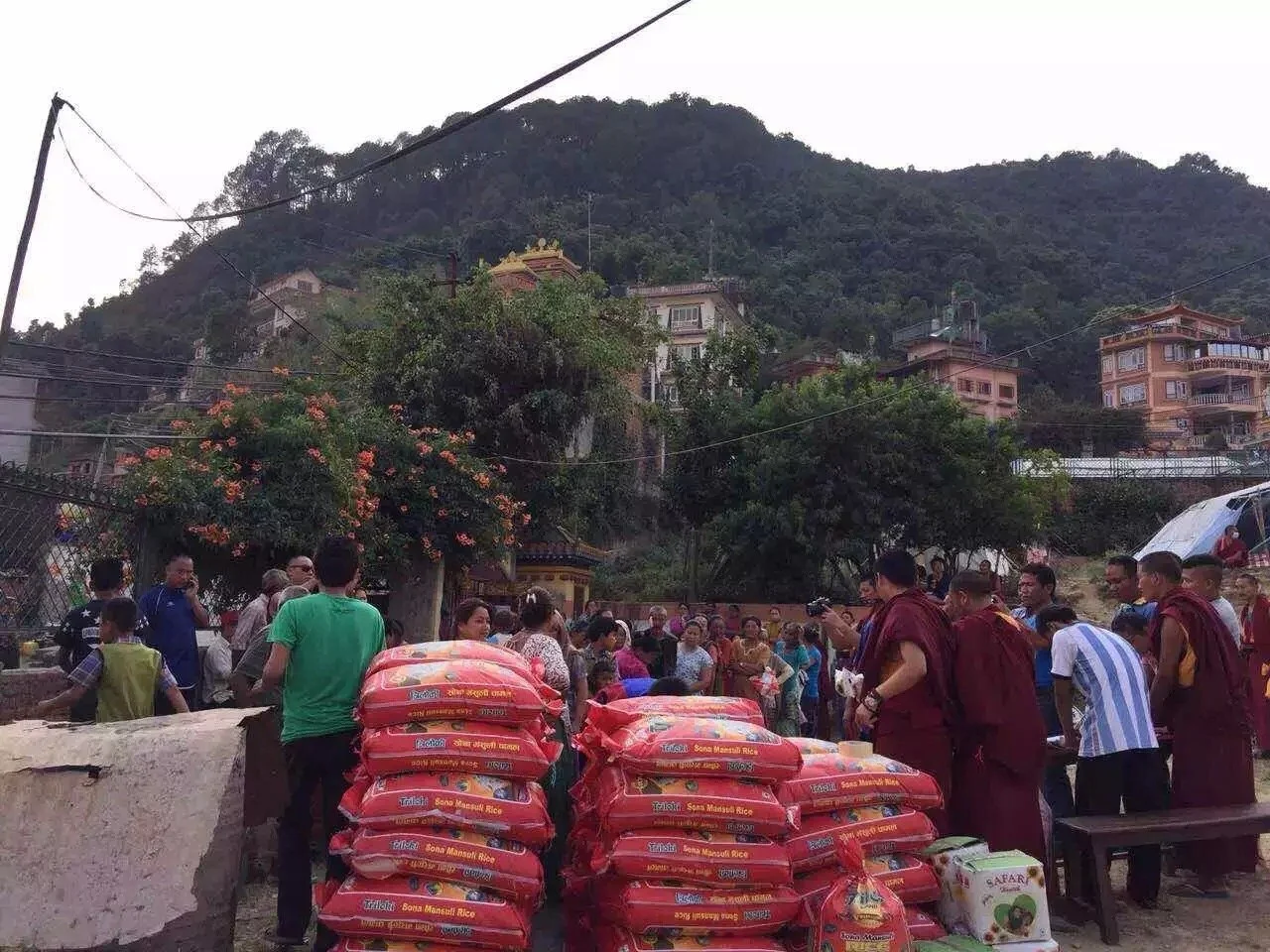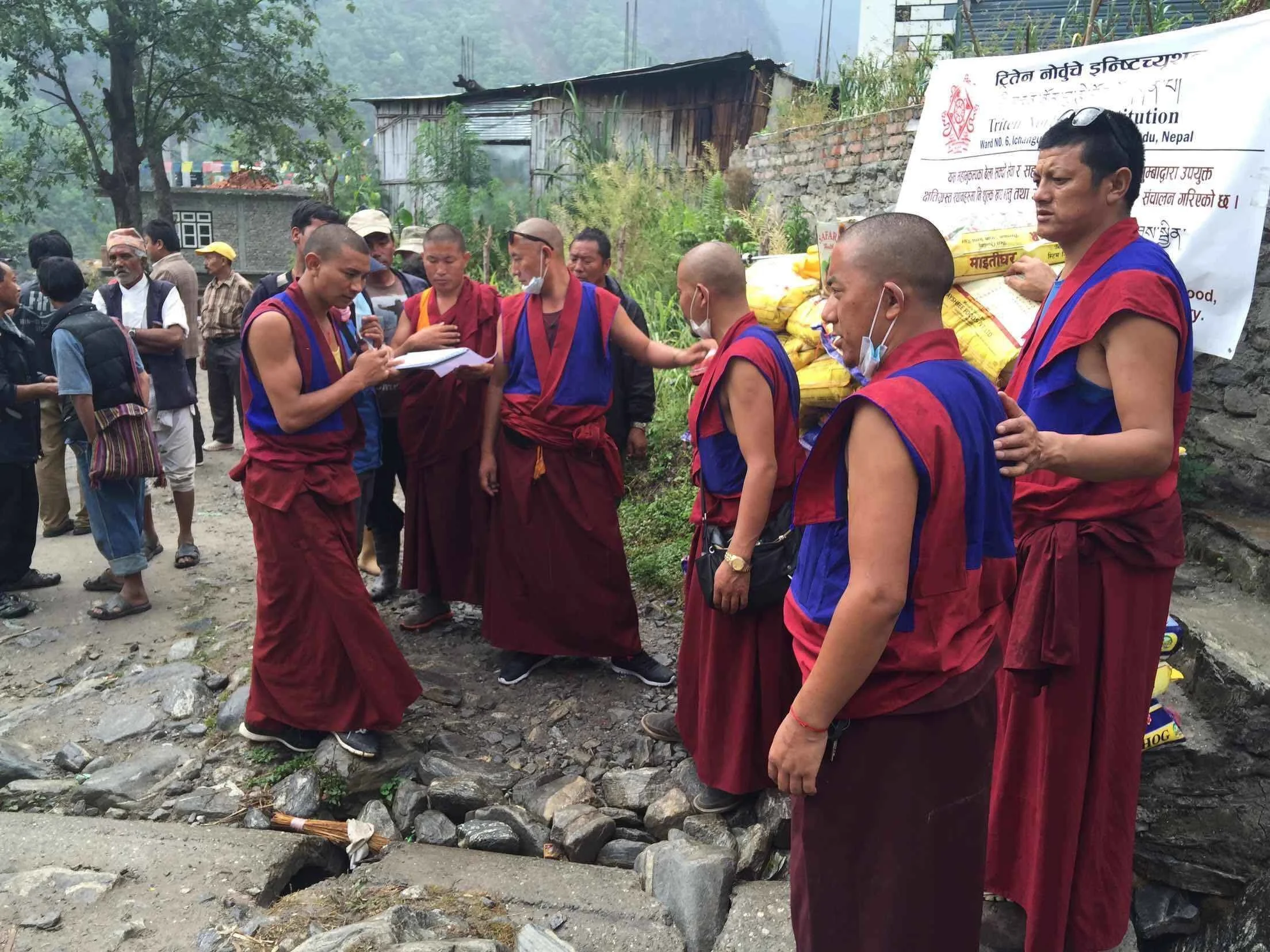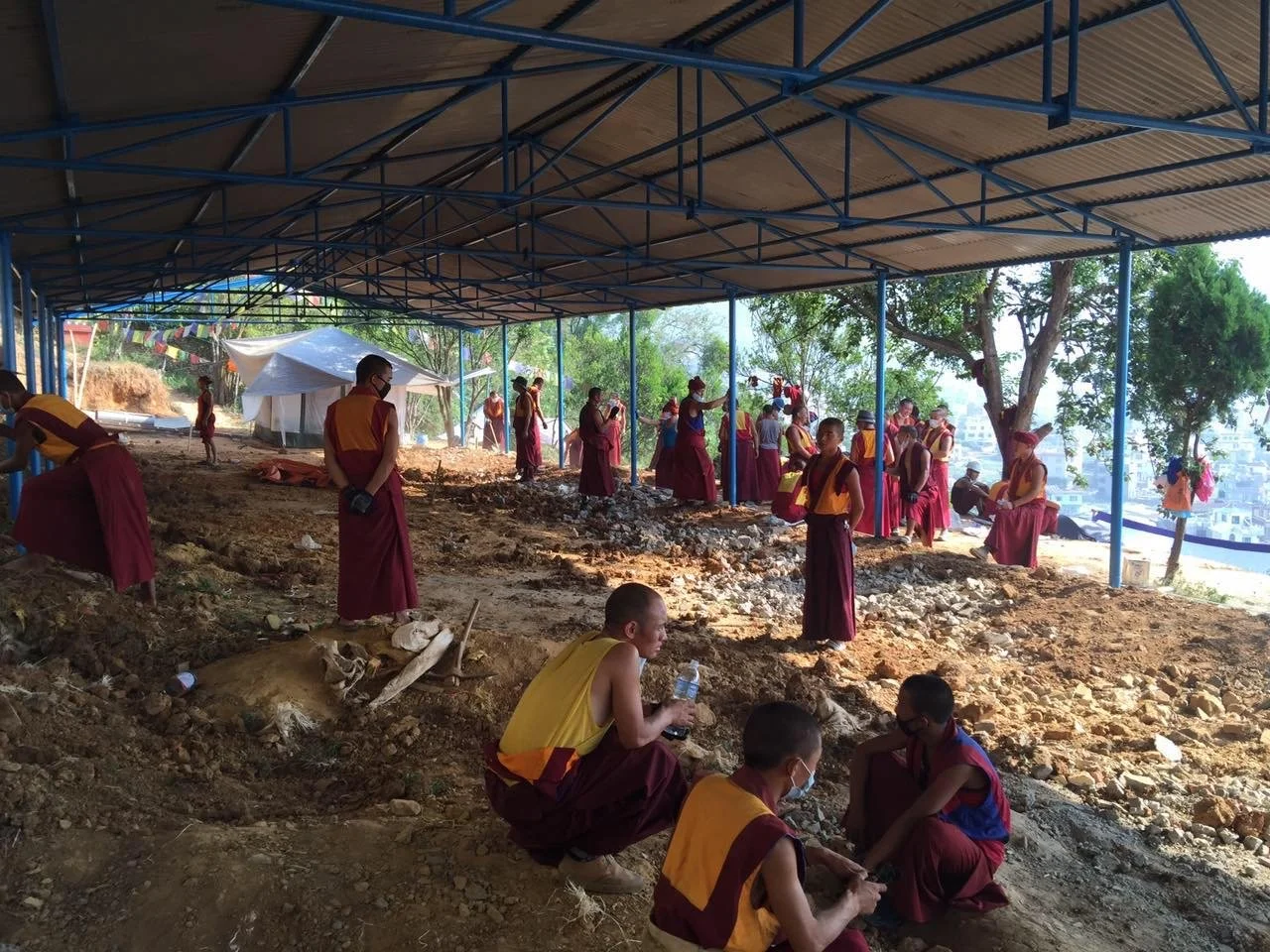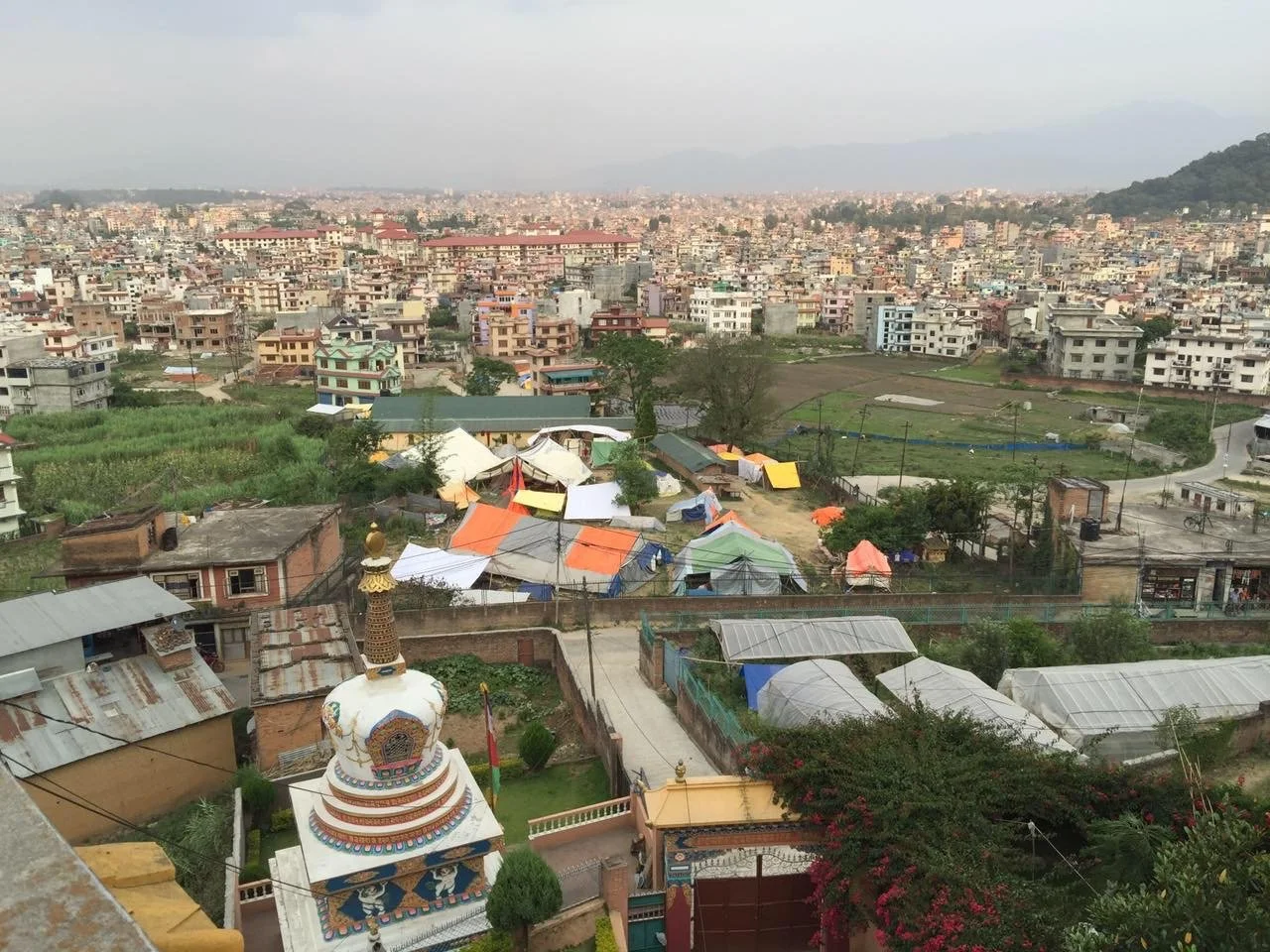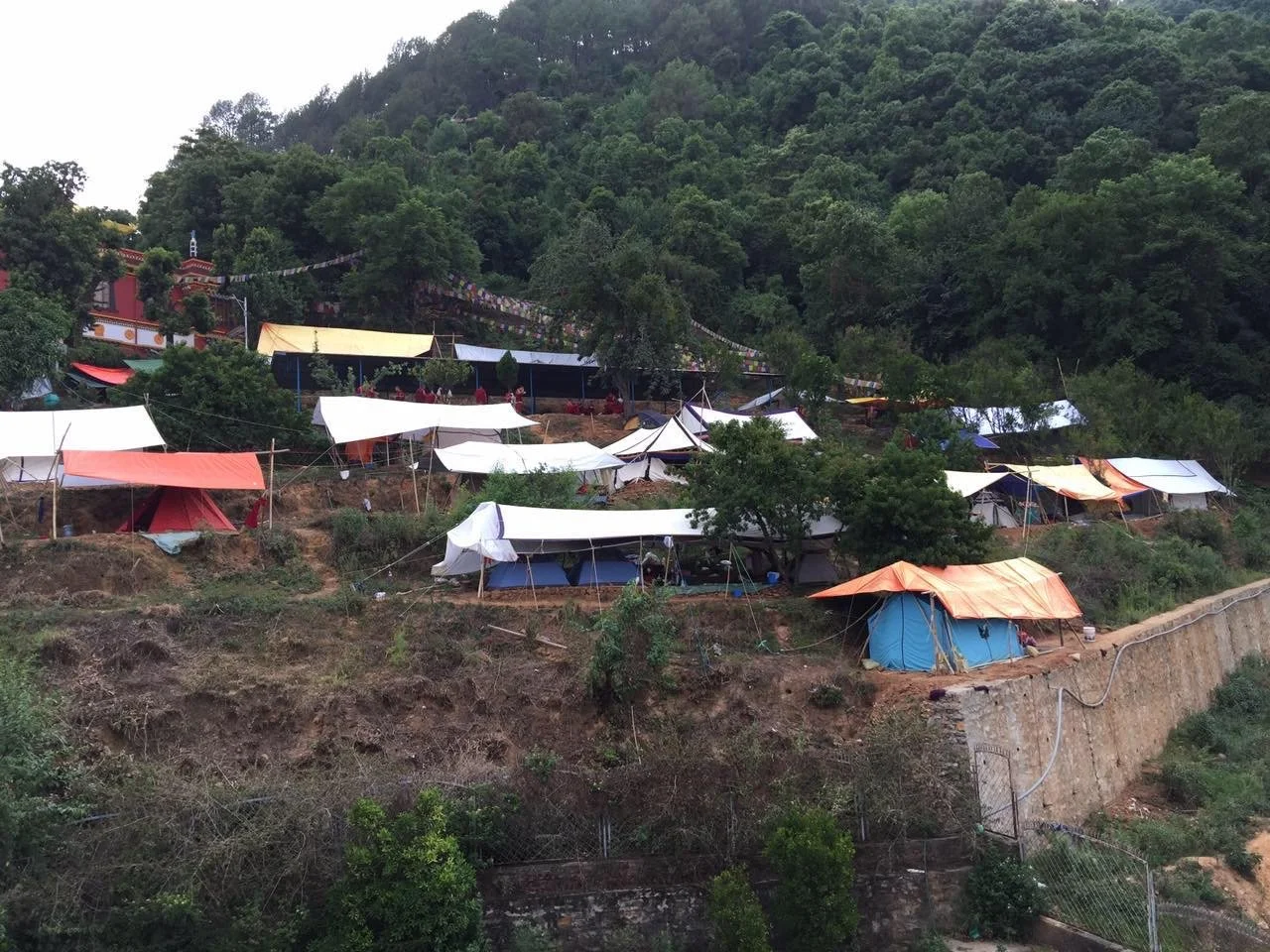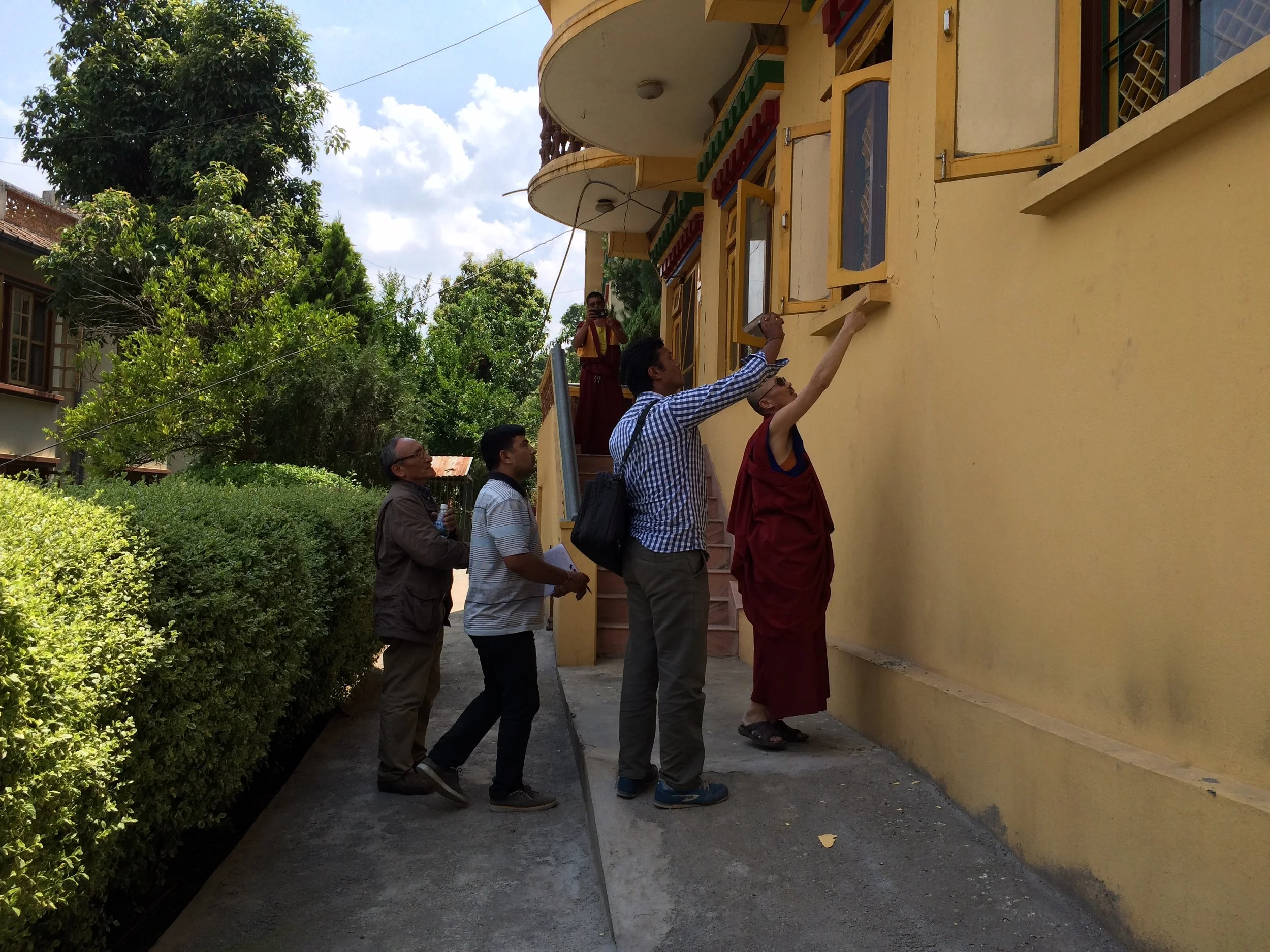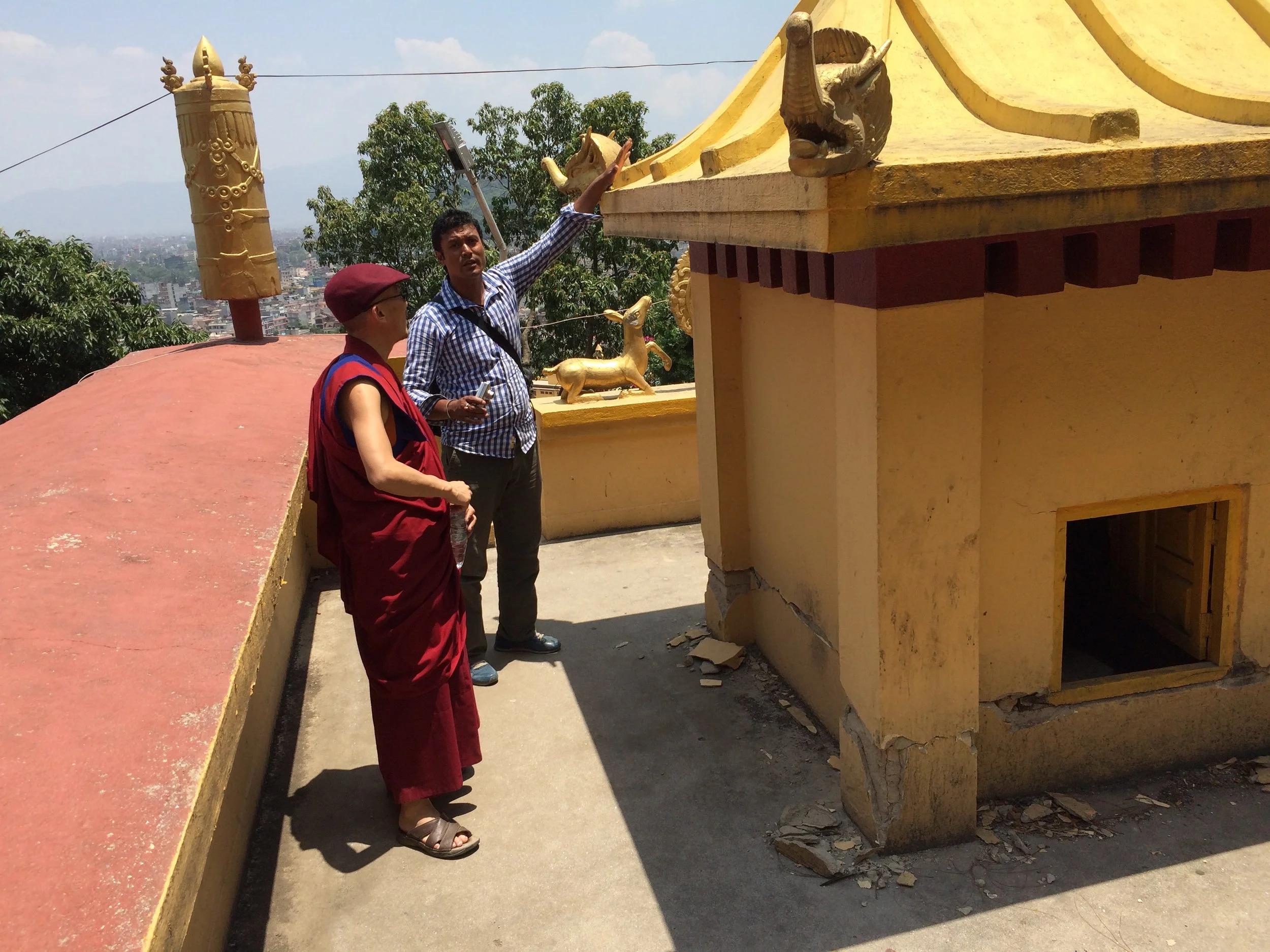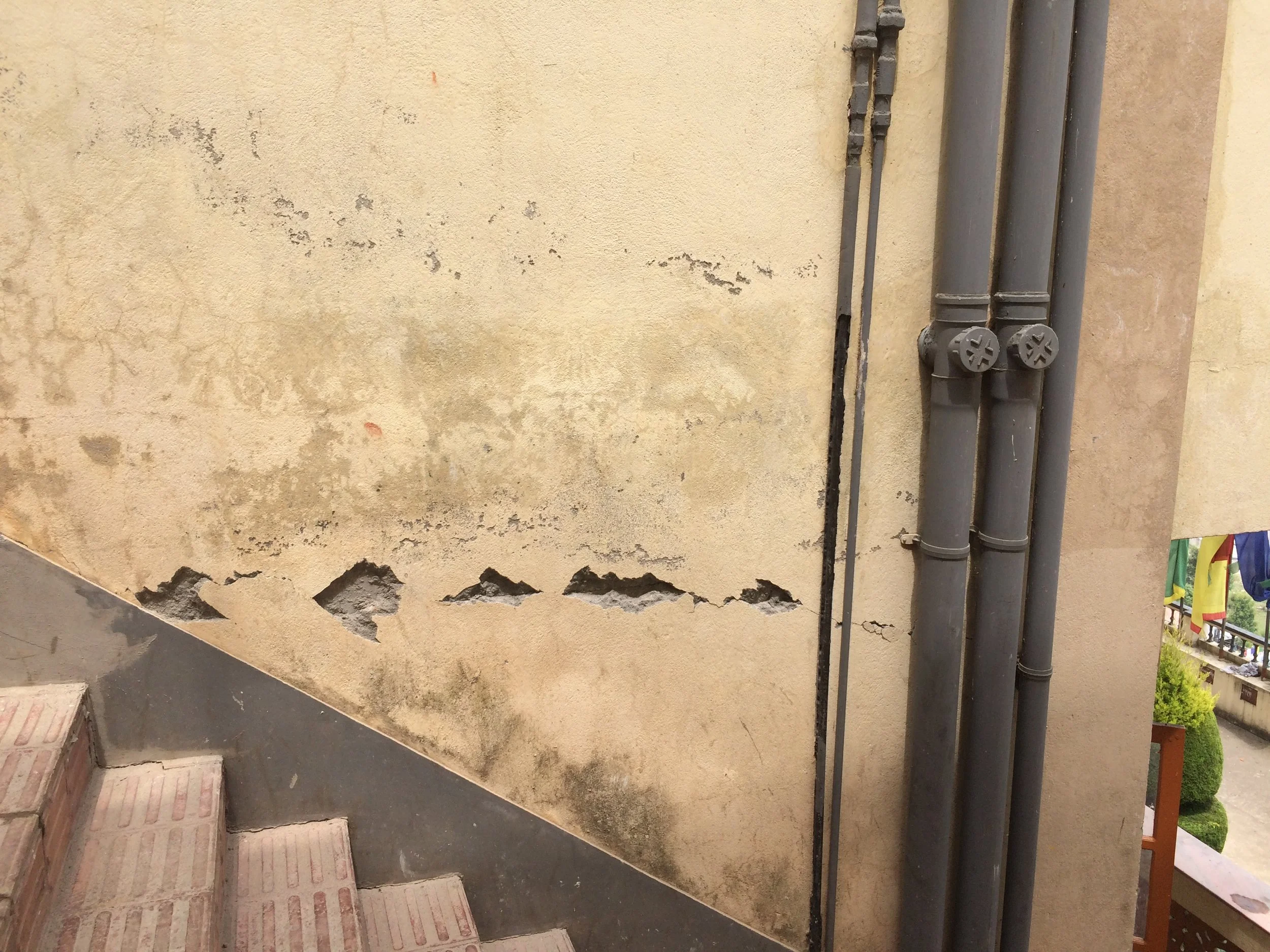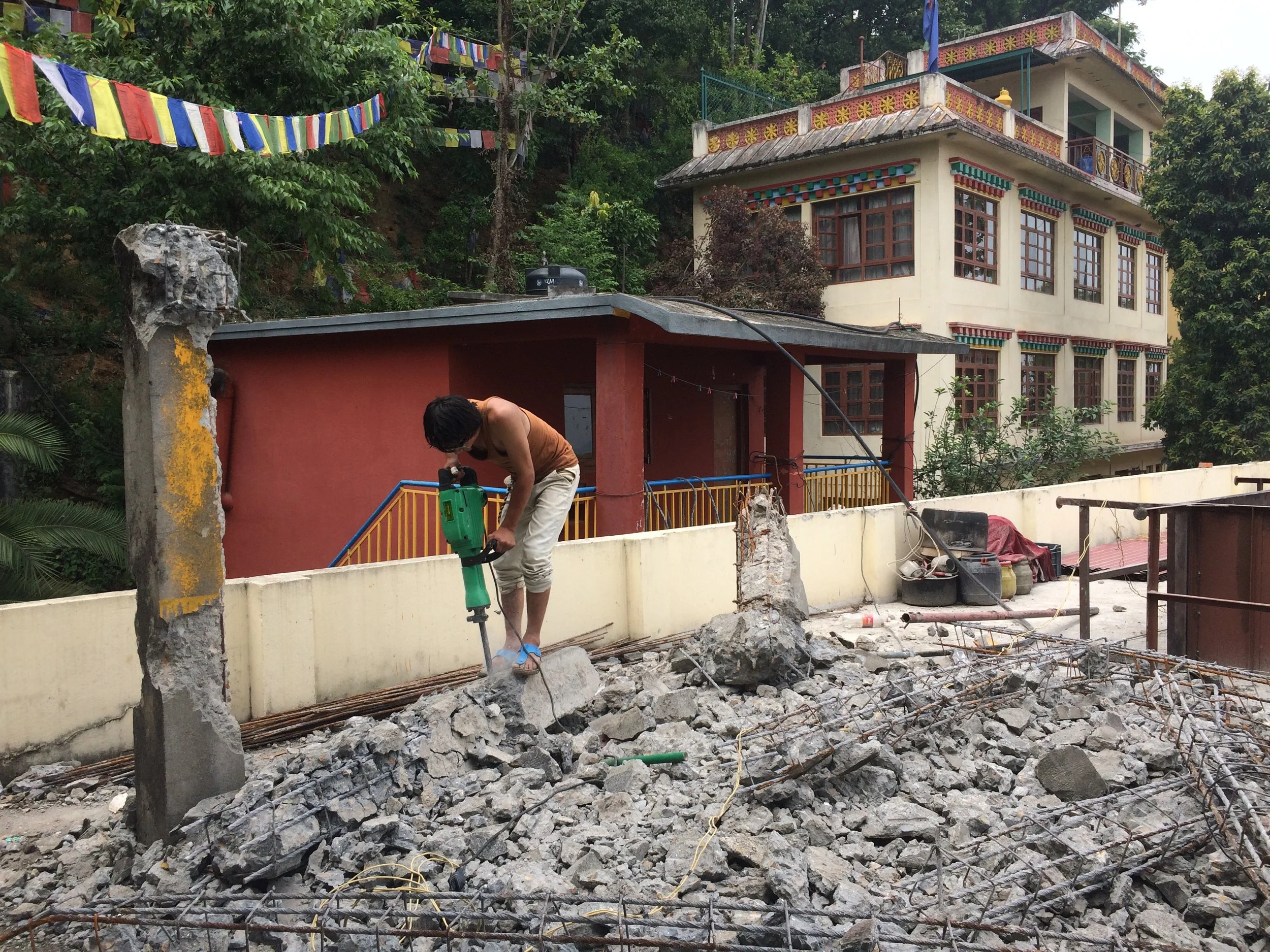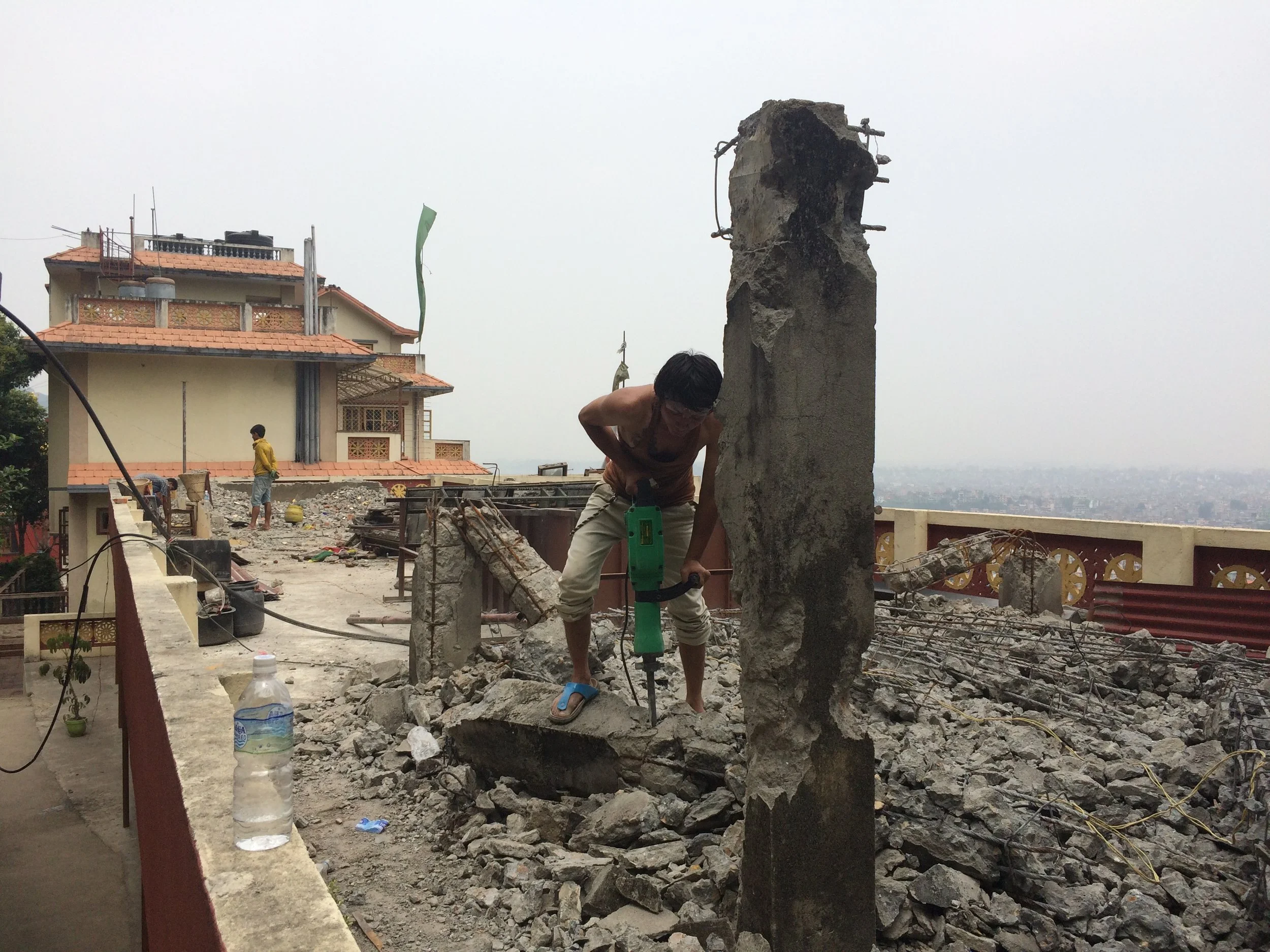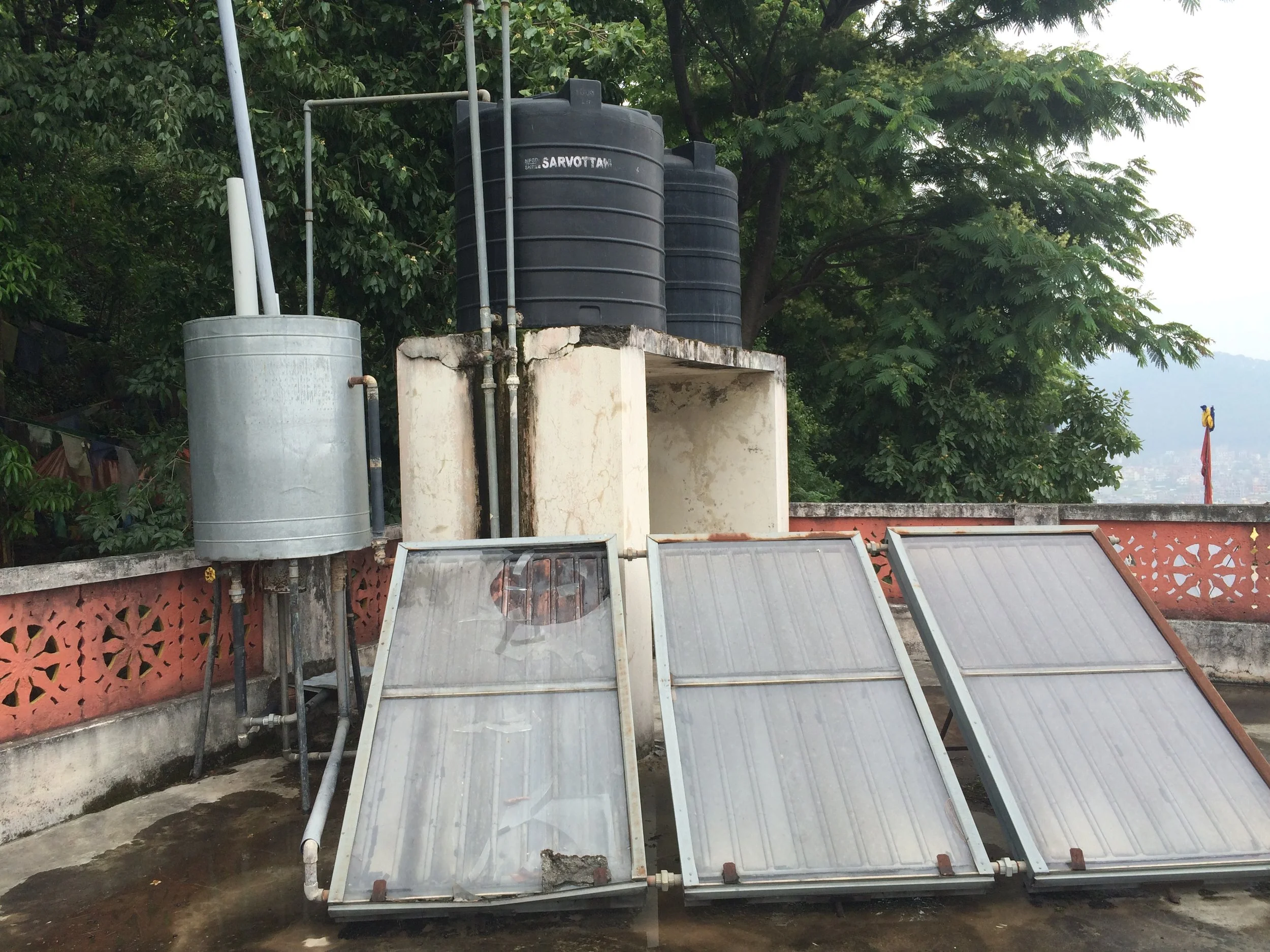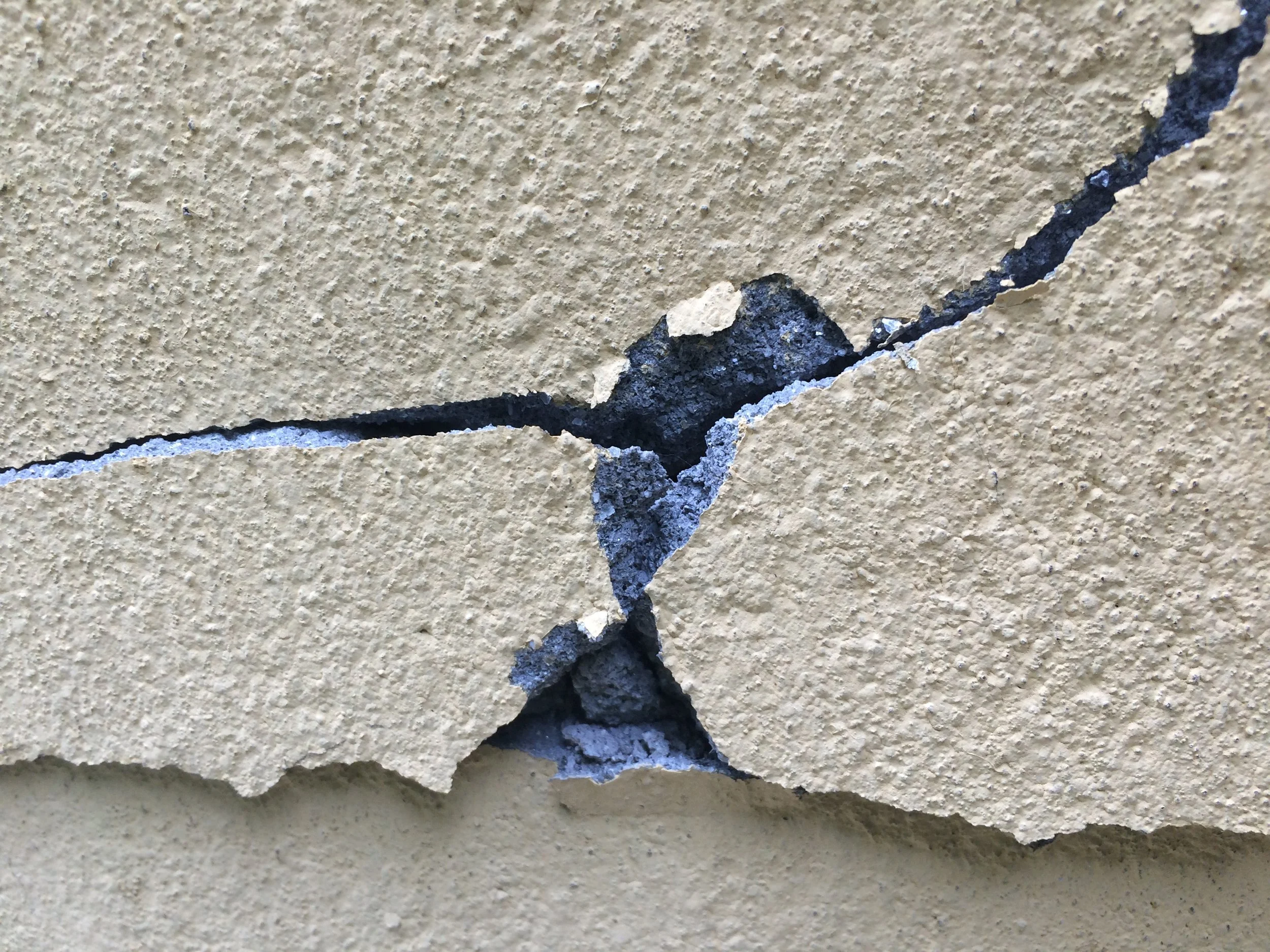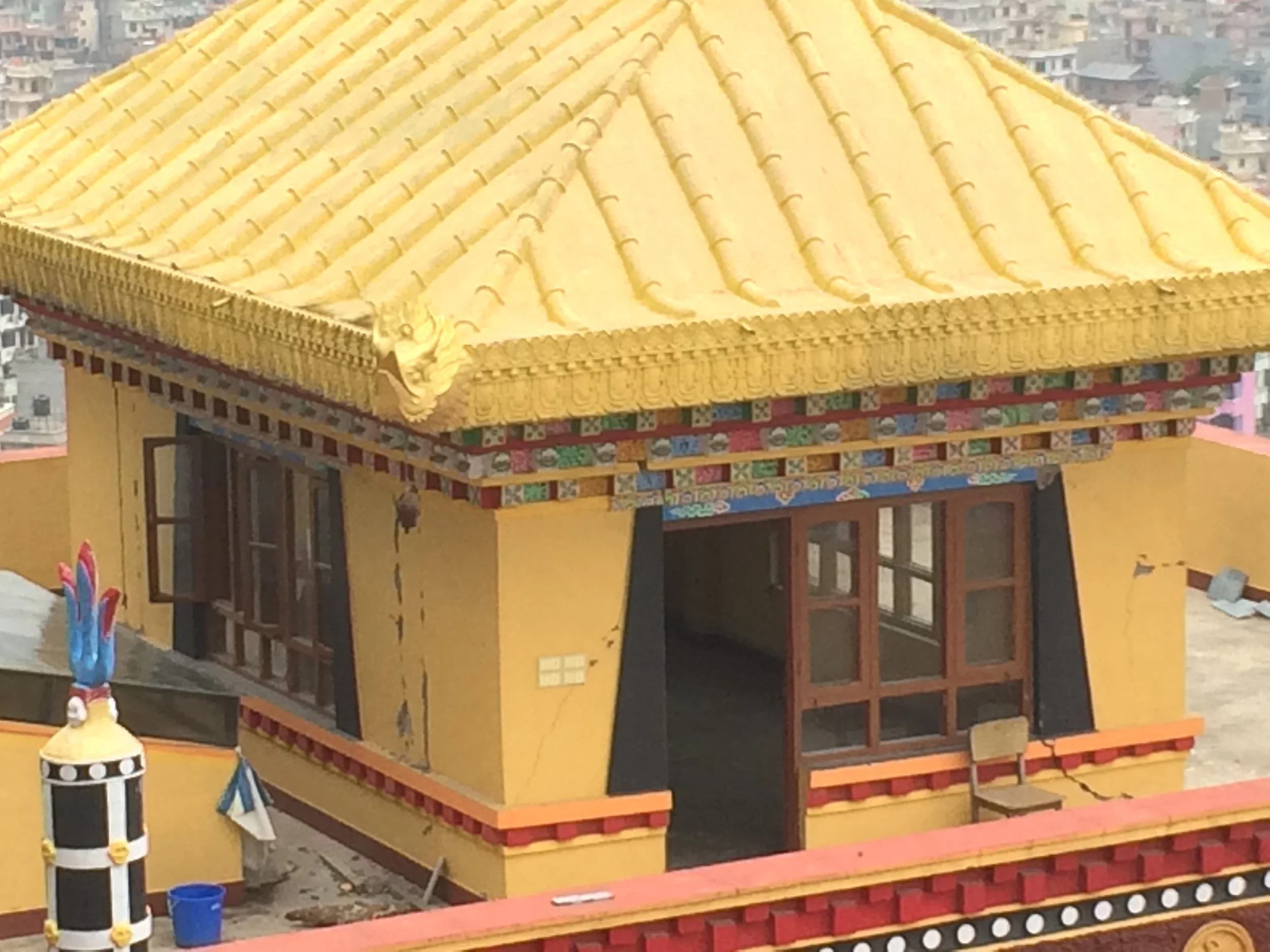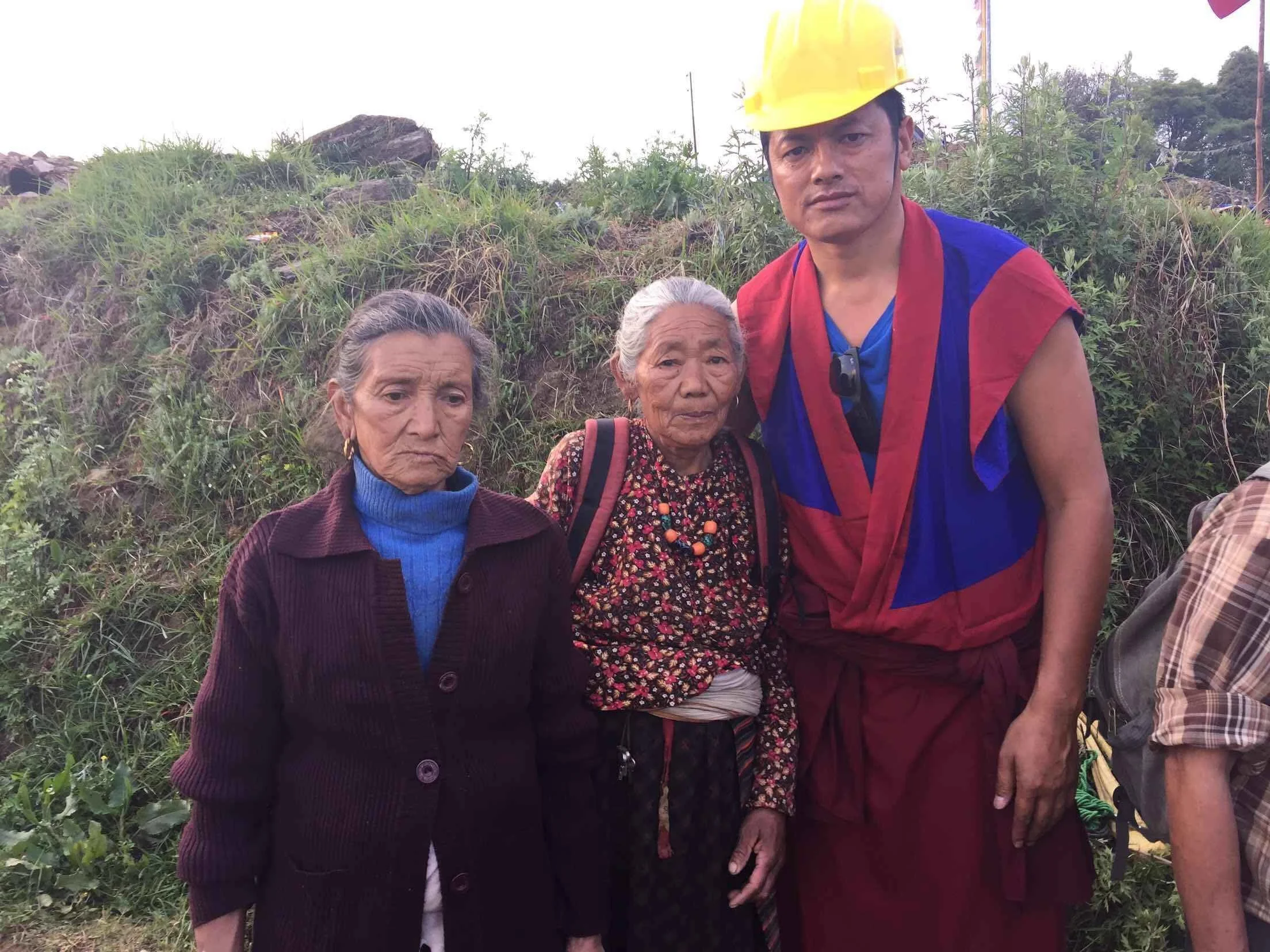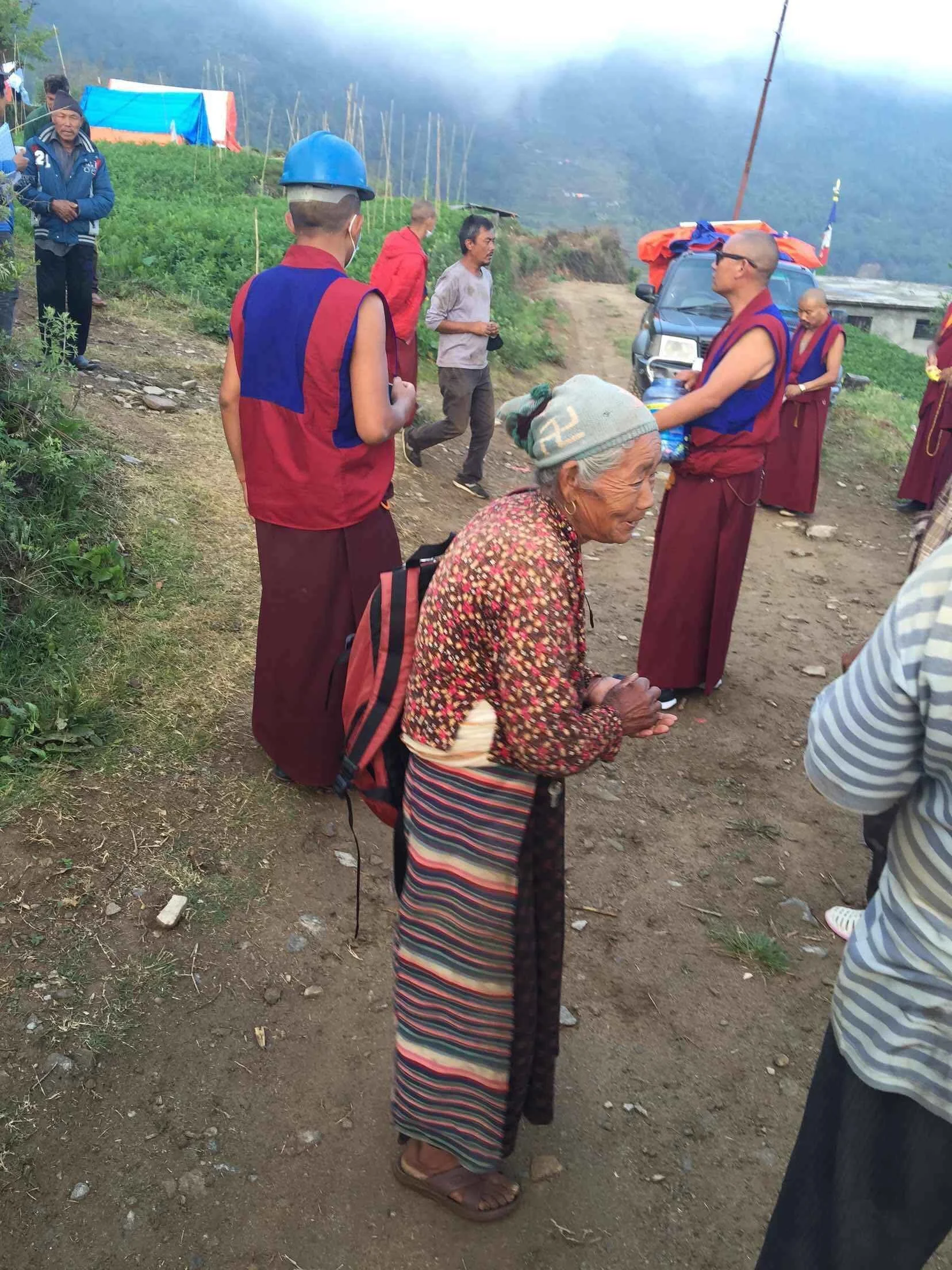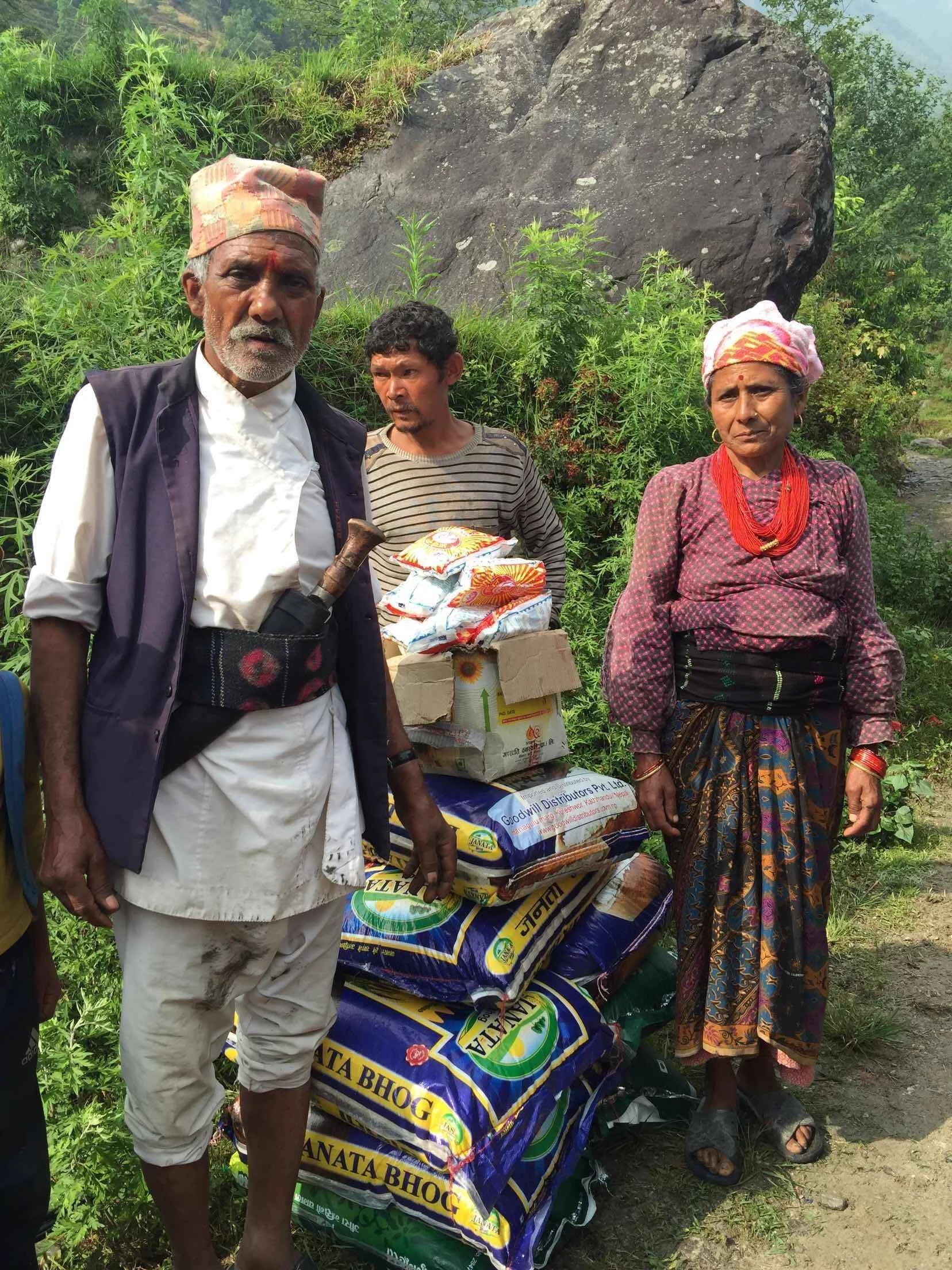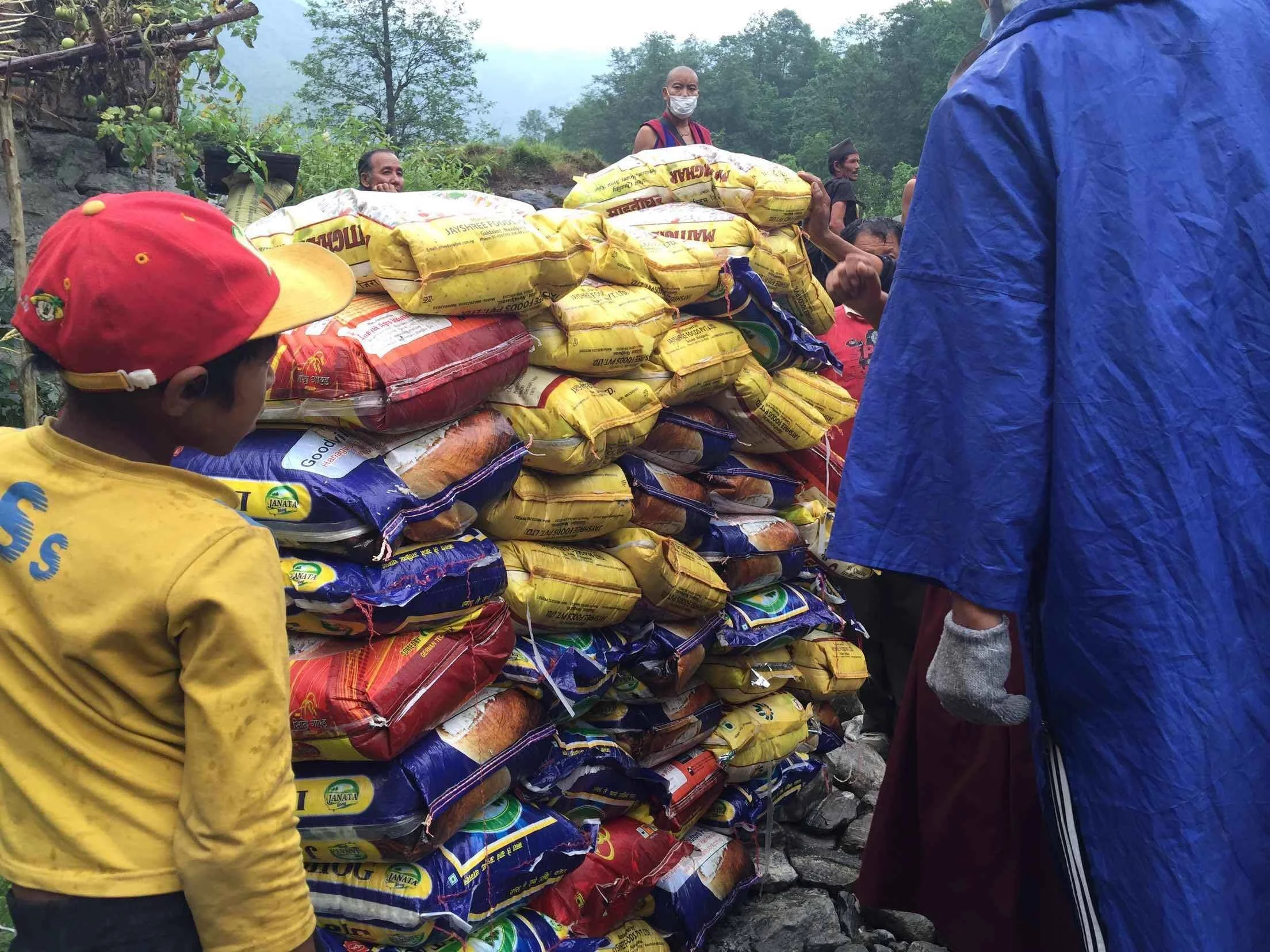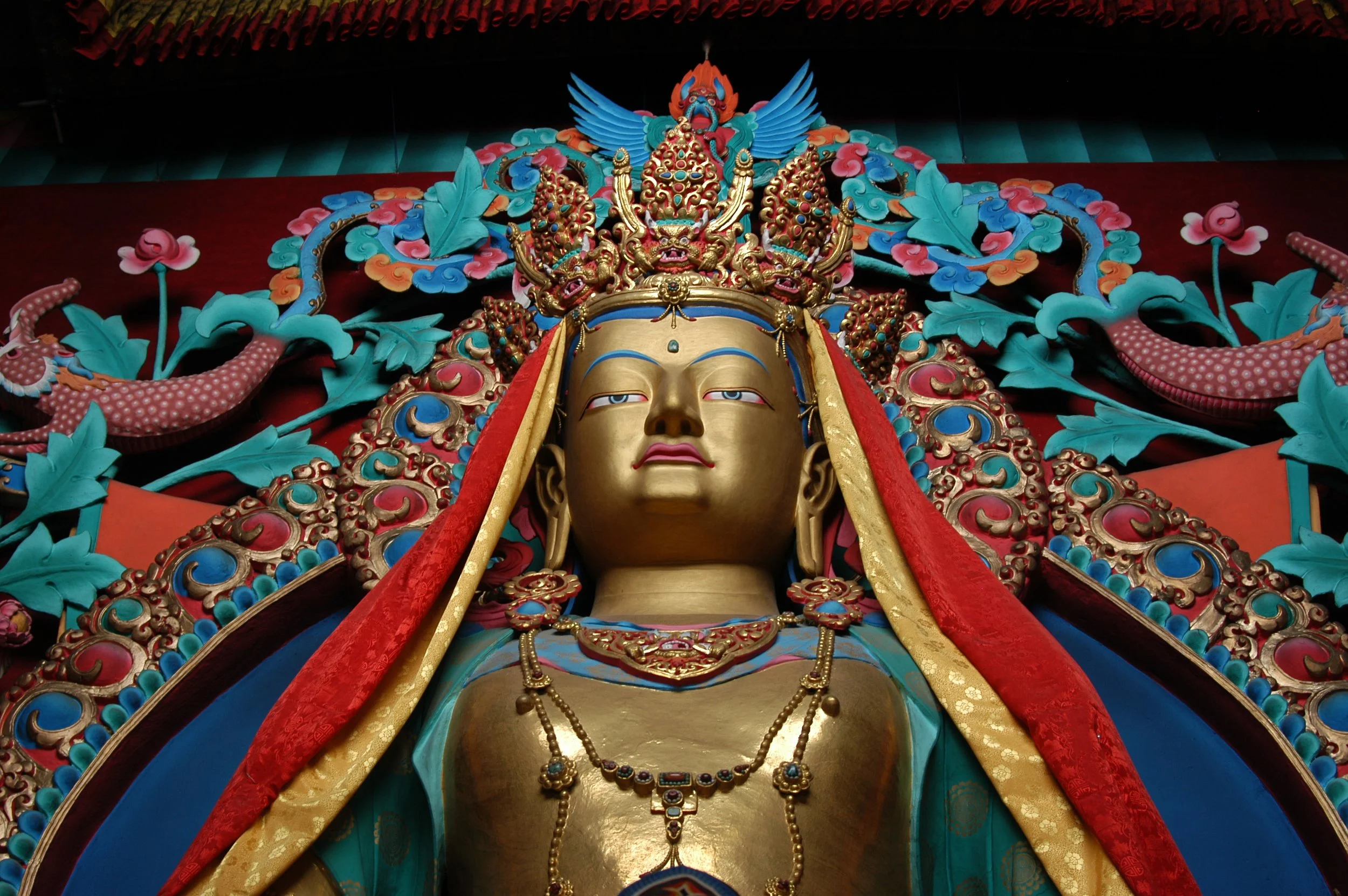
Triten Norbutse monastery
THE STABLE SEAT OF JEWEL PEAK
A Journey Through Time: The Story of Triten Norbutse Monastery
Triten Norbutse (The Stable Seat of Jewel Peak) was founded by His Eminence Yongdzin Lopön Tenzin Namdak Rinpoche, whose unwavering dedication rekindled the living flame of the Bön tradition — from Tibet to Nepal and beyond.
What follows here is a multimedia timeline designed and developed under the guidance of Khenchen Tenpa Yungdrung Rinpoche. Whether you are a long-time practitioner familiar with the history of Triten Norbutse's Institution and monastery or a new member of our growing Bön community, the timeline is designed to take you on a journey through time — from our origins in 14th-century Tibet to the re-establishment on a hillside in Kathmandu during the 1980s, to the latest expansion and the opening of the new temple in February 2025, marking the 100th birth anniversary of Yongdzin Rinpoche, and finally, toward our future visions.
The story of Triten Norbutse is one of continuity, care, and deep commitment across generations. We hope this timeline serves as both an empowerment and a transmission of lineage for our current and future sangha members.
Origins in Tibet
14th Century – 1959
Looking back at the history of Triten Norbutse, it becomes clear that it richly deserves its Tibetan name: The Stable Seat of Jewel Peak. Triten Norbutse was originally situated in Tibet and founded in the 14th century by the renowned Bönpo master Shen Nyima Gyaltsen (b. 1360), a descendant of the Shen lineage of Buddha Tönpa Shenrab, the founder of the Bön tradition. Nyima Gyaltsen was well known for his mastery of tantric powers and his commentary on the Ma Gyud (Mother Tantra); he envisioned establishing Triten Norbutse as a major centre for Dzogchen and tantric study and practice. Following the realisation of his vision, the monastery developed into a significant hub for the practice of the Ma Gyud and veneration of the protector deity Sidpai Gyalmo. Monks and devout Bönpo villages living near the monastery became dedicated supporters of the centre. Over time, Triten Norbutse became one of the four principal Bönpo monastic institutions in Tibet, providing comprehensive cultural, religious and philosophical education and safeguarding the rich academic traditions of the Bön lineage. The central role Triten Norbutse played in the spiritual lives of Bönpo communities across Tibet continued until the Cultural Revolution, during which the monastery sustained considerable damage and destruction. The rebuilding process did not commence immediately. However, as the Cultural Revolution progressed and the exiled communities returned to Tibet, the rebuilding began, allowing the revival of its historical legacy and the renewal of monastic study and practice.
The original site of Triten Norbutse Monastery in Tibet. © Khenchen Tenpa Yungdrung Rinpoche.
The planting of the seed
1977
The seed for Triten Norbutse (Nepal) was planted in 1977 when Yongdzin Rinpoche arrived in Kathmandu as part of a personal pilgrimage. At that time, Rinpoche had no concrete intention of building a monastery. Rather, he was deeply ingrained into performing prayers and offerings in memory of his personal assistant, student, and the very person who had once saved his life.
With no intention or idea that one day he would build a monastery, he was simply mourning, praying, and walking around sacred sites like the Swayambhunath Stupa, lighting butter lamps and reflecting deeply. But, one day, something strange happens.
While resting on the long staircase of the Swayambhunath, a powerful and spontaneous aspiration arose in Rinpoche's heart: "How wonderful it would be if there were a Bön monastery here in Kathmandu—a place of practice, prayer, and community for Bön practitioners and exiled Tibetans".
At that time, there was no such space in the capital. So, the idea of a Bön monastery made total sense. However, since Rinpoche had neither land nor financial means and was deeply engaged with his responsibilities in India at the newly established Bönpo settlement and Menri monastery, this wish remained just that: a silent and profound inner aspiration.
Founding triten norbutse Monastery in nepal
Nearly a decade passed. Then, in 1986, as Rinpoche prepared to return to Tibet for the first time since his exile in the early 1960s, he stopped in Kathmandu. During this visit, he stayed at the home of Norbu Lama and engaged with the local Tibetan community. The refugees, many from the Himalayan regions of Dolpo and Mustang, would visit Rinpoche and share their struggles, particularly their difficulty in finding a dedicated place for prayer and practice. At that time, there was still no such space in the capital. Hearing and reflecting on the communities’ struggles, Rinpoche's old aspiration from 1977 came back with a sense of clarity, strength and determination: Now was the time.
Although the seed for the monastery was planted ten years prior, sparked by a spontaneous desire in Rinpoche’s heart, its vision had always been rooted in his unwavering commitment to the education and preservation of the Bön tradition. Having witnessed the hardships faced by Tibetan refugee communities and young Bönpo, especially those from remote Himalayan regions such as Dolpa and Mustang, in accessing proper training and practice, Rinpoche envisioned a place where comprehensive spiritual and academic education could be offered in one integrated setting.
Yongdzin Rinpoche founded Triten Norbutse Monastery in Kathmandu in 1987 on a hill overlooking the great Stupa of Swayambhu — a sacred site believed to have been miraculously blessed by Buddha Tönpa Shenrab. Though he did not have financial means, Rinpoche asked his friends in the Kathmandu Bönpo community to search for land near Swayambhu, with the intention of purchasing it upon his return.
It was a bold and improbable plan, and few believed it could succeed under such uncertain conditions. Yet when Rinpoche returned from Tibet, he received unexpected news: an advance had been paid on a plot of land, thanks to loans taken by the local Bönpo community.
The initial acquisition of the land marked a significant turning point in Rinpoche’s vision for establishing a lasting foundation for the Bön tradition. However, the process unfolded in unexpected ways. Financial difficulties led to delays in the repayment of the loan, putting the entire project at risk. At one point, the original owner even attempted to reclaim the land.
Eventually, a large portion of the loan was repaid using offerings and donations that Rinpoche had received while teaching in Tibet. The acquisition was ultimately finalised thanks to the generous contribution of a devotee, who provided the remaining amount needed to complete the purchase.
This marked a critical step in turning his vision into reality. But when Rinpoche visited the land, another layer of complexity revealed itself. There was no proper access road from the Ring Road, and the site sat on the steep side of a mountain, overgrown with jungle and thick vegetation. The dream of building a monastery here would clearly require more effort, time, resources.
In 1987, Rinpoche returned to India and entrusted Norbu Lama with the next phase: beginning construction on the newly acquired land. With the generous support of Professor Lin Yun from the University of California, Berkeley, work began on building the first three rooms.
In the early days, building relationships with the local community proved challenging. The sudden appearance of monks and the start of construction brought unease and uncertainty. But over time — through patience, mutual respect, and sincere intentions — a relationship of trust slowly took root between the monastery and its neighbors. This spirit of cooperation continues to this day, making Triten Norbutse not only a respected center of Bön learning, but also a leading example of community-centred spiritual development — both in Nepal and internationally.
Construction continued steadily, and in December 1988, Yongdzin Rinpoche returned to Kathmandu with two Geshes. Eager to bring life to the emerging monastery, they made a bold decision: to move into the newly built three rooms — even though they had no household items and very few basic necessities. Shortly after, they were joined by four young Bönpo monks, recently arrived from Tibet as refugees. Together, they began shaping not just a physical space, but the spiritual and communal foundations of the monastery.
By 1989, three additional rooms, a library, and a basic space of temple were completed. Over the next three years, with the support of the French organisation Association L’Étape, which sent volunteers and materials, the monastery expanded to include a kitchen, dining hall, sleeping quarters, toilets, and a guest reception room.
In 1991, under the personal supervision of Yongdzin Rinpoche, construction of a new and more complete Gompa began, marking the transition from a simple beginning to the fuller realisation of his long-held vision.
Rinpoche also foresaw the growing global interest in the Bön tradition and understood that the monastery needed to be structured in a way that would welcome and support future students, scholars, and practitioners from around the world.
Throughout his own journey of mastering the Bön teachings, Rinpoche immersed himself in the full spectrum of the tradition, from the practical arts to the most esoteric dimensions. These extensive and multifaceted transmissions from earlier masters deeply informed the foundation of Triten Norbutse, which he conceived not only as a place of rigorous study and spiritual practice but also as a cultural and spiritual hub dedicated to the preservation and revitalisation of the religious, artistic, and social heritage of Yungdrung Bön.
Rinpoche’s futuristic and far-sighted vision continues to guide Triten Norbutse and its affiliated centres worldwide.
Sacred Architecture and Artistic Offerings
1991 – 1997
As construction of the new Gompa advanced in the early 1990s, the monastery entered a transformative phase — not just of building but of beautifying, consecrating, and deepening its sacred presence. Artists from Bhutan were invited to sculpt a large statue of Tönpa Shenrab, the founder of the Bön tradition. This statue was generously sponsored by Marong Chöje and his family in Dolanji, whose support helped bring the heart of the tradition into physical form. Two other significant statues followed:
One of Drenpa Namkha, symbolising the combined power of all the Siddhas, and another of Nyame Sherab Gyaltsen, the great reformer and founder of Menri Monastery. These statues were created by Tibetan sculptors and offered by two devoted Bönpo families, Tenzin Ngodrup and Jamga, also from Dolanji.
Inside the Gompa, Bhutanese artists painted powerful depictions of Guardians, Midu, and Sidpai Gyalmo, and the Bönpo artist monks of Triten Norbutse created an extraordinary body of work that filled the space with vivid spiritual expression. Their contributions included:
19 painted Mandalas
1,000 Buddhas
Large images of Nampar Gyalwa and Sherab Jyamma (the Embodiment of Wisdom and Loving Kindness)
Depictions of the Buddhas of the Three Times
Portraits of Nyamed Sherab Gyaltsen
And all the external architectural decorations that continue to inspire visitors and practitioners alike
In 1992, a large Prayer Wheel (khorchen) was built and installed in Kathmandu, sponsored by Tenpa Rigdzin and his family. That same year, the monastery library experienced significant growth, acquiring texts from all major Tibetan traditions and numerous works in other languages, reflecting Yongdzin Rinpoche’s belief that Bön students should be well-read not only in their own lineage but also across traditions and disciplines.
Following a visit to Tibet that same year, Rinpoche brought back rare texts that were no longer available outside Tibet to publish them in India and preserve them for future generations. Among these additions was the first copy of the Bön Kangyur (Canonical Scriptures) outside of Tibet — an extensive 149-volume collection that remains one of the cornerstones of the monastery’s library.
Also in 1992, a significant moment of continuity took place: Geshe Nyima Wangyal, one of Yongdzin Rinpoche’s senior students from Dolanji and among the first to complete the Geshe course, was formally enthroned as Abbot of Triten Norbutse Monastery — ensuring that the lineage, now rooted once again in Himalayan soil, would be guided with clarity and care.
From 1991 to 1997, Triten Norbutse entered a defining chapter — a period of architectural expansion, artistic flourishing, and scholarly consolidation. Statues were raised, mandalas painted, sacred texts restored, and the foundations of a vibrant monastic culture were firmly laid. This work has not only continued but expanded. In recent years, the monastery has begun integrating modern technologies and digital arts to document teachings, preserve texts, and reach students worldwide.
Establishing the Geshe Programme and Education
By 1994, Rinpoche’s vision of a complete Bön education took a major step forward with the official launch of the 13-year Geshe Degree Programme at Triten Norbutse. Representing the highest academic achievement in the Bön tradition, comparable to a doctorate in the Western system.
Rinpoche's personal education and training toward a Geshe degree did not follow a linear path of direct registration for the programme. But rather, he had to follow a non-linear and unexpected path. From a deep desire for solitary training in a cave for four years to devotional walks in the mountains to receive teachings from his masters, to thangka and calligraphy.
This comprehensive path gave Rinpoche an unparalleled authority on the lineage and deep insight into designing a training system that would ensure monks receive multidimensional, rigorous and holistic education. Structured across more than a decade of study, the Geshe Degree Programme at Triten Norbutse fully covers:
Sutra (Path of Renunciation)
Tantra (Path of Transformation)
Dzogchen (Path of Liberation)
Formal debating and logical reasoning
Cosmology and astrology
Traditional Tibetan medicine
Tibetan grammar, calligraphy, and script
Sanskrit grammar and textual interpretation
In addition, monks are trained in sacred arts — including the drawing of mandalas, ritual iconography, musical offerings, and ceremonial practice — ensuring the full transmission of both intellectual and experiential dimensions of the Bön path. Upon successful completion of the programme, students are awarded the Geshe Degree, a title recognised and respected across all Tibetan traditions, including by His Holiness the 14th Dalai Lama.
Alongside the scholarly path, a dedicated Meditation Group (Gomdra) was also established to focus on Dzogchen — the Great Perfection — preserving the depth of meditative insight and direct realisation at the heart of the tradition. This moment in 1994 marked the formal arrival of Triten Norbutse as a true centre of complete Bön learning — integrating academic depth, spiritual discipline, and cultural richness in one living institution.
The Monastery Today and Future Plans
1994 Onward
By 1994, Triten Norbutse had firmly established itself as a flourishing monastic and educational centre. The subsequent years were characterised by steady growth, both in physical infrastructure and in the depth of its spiritual and intellectual life.
New retreat houses for Dark Retreats were built, along with a larger, more practical kitchen to accommodate the increasing number of residents.
The Dialectic School (Shedra) and Meditation Group (Gomdra) were officially established that same year, providing students with a programme that combined rigorous philosophical training with profound meditative practice.
Subsequently, in 1994, the monastery was officially inaugurated with seven days of consecration ceremony, a landmark occasion attended by H.H. the 33rd Menri Trizin Lungtok Tenpai Nyima Rinpoche.
In 1996, a residence for Lama (Labrang) was completed, and a new junior Lopön, Tempa Yungdrung, was appointed to teach Logic, Grammar, and Sutra studies to the younger monks. That same year, five senior Geshes from Dolanji, India, joined the teaching team, bringing new depth to the curriculum with their expertise in Bön philosophy and ritual.
By 1997, a new residential building was completed, capable of accommodating 60 monks, further increasing the monastery’s ability to support its expanding community. That year also saw the construction of a commemorative stupa of Yundrung Köleg in honour of Lama Sonam Gyaltsen, the Abbot of the Bönpo Monastery at Dhorpatan, who had passed away in Nov. 1995.
Another remarkable structure — a Senkar Li Li Bang Bang stupa — was also built. Described in the biography of Tönpa Shenrab as one of the 120 types of physical stupas, this rotating metal stupa contains 108 butter lamps offered to the 45 Peaceful and 80 Wrathful Deities (Zhitrö). It functions both to purify the environment and to support the spiritual transition of the deceased towards a higher rebirth.
In 2001, Kenchen Tenpa Yungdrung Rinpoche, who had served as Ponlop (Head Teacher) since 1996, was formally enthroned as the Abbot (Khenpo) of Triten Norbutse by H.H. the 33rd Menri Trizin and H.E. Yongdzin Rinpoche. During the same time, Triten Norbutse’s first Geshe graduation took place, a milestone event for the Bön and Nepal.
Looking ahead, the monastery continues to grow in response to the changing needs of its community. Plans include building a dedicated Retreat and Practice Centre for the Meditation School and purchasing land beneath the monastery to drill a well for clean drinking water — a crucial step towards long-term sustainability, both spiritually and practically.
As Triten Norbutse expands, it remains firmly rooted in the Bön tradition while taking on the responsibilities of today and the hopes of tomorrow — not only as a monastic seat of learning but as a living, vibrant centre of culture, care, and continuity.
Rebuilding After the 2015 Earthquake
Under the Guidance of Kenchen Tenpa Yungdrung Rinpoche
Following the devastating 7.8-magnitude earthquake that struck Nepal in April 2015, Triten Norbutse Monastery—though remaining structurally sound—suffered damage that required immediate attention and long-term resilience planning. Under the leadership of Kenchen Tenpa Yungdrung Rinpoche, the monastery began a careful reconstruction process that focused on both the safety of its community and the preservation of its sacred heritage. Images courtesy of Kenchen Tenpa Yungdrung Rinpoche show the reconstruction efforts carried out after the earthquake, both on the monastery site and within the local community.
Construction of the new temple
2020 – 2025
The latest chapter in Triten Norbutse Monastery’s evolution is marked by the construction of an ambitious new five-storey temple complex that reflects both the growing needs of the monastic community and the monastery’s expanding role in the world. Designed to host teachings, retreats, and major ceremonies, the new building will accommodate up to 600 people on special occasions, while also serving as a centre for daily study and practice. Its upper levels include spacious classrooms, meeting halls, and dedicated spaces for learning, while the lower floors provide dormitories for young monks, as well as modern kitchens and service areas. One of the most symbolic elements of the complex is the top-floor residence for His Eminence Yongdzin Rinpoche, offering sweeping views of the Kathmandu Valley—a serene space designed for contemplation and ongoing teaching. An elevator has also been installed, representing the monastery’s first step towards integrating accessibility and modern convenience into its sacred architecture. The temple, with its striking red façade and pagoda-style rooftop under construction, stands as a powerful symbol of the monastery’s enduring commitment to tradition, learning, and transformation. Despite delays caused by the global pandemic and seasonal monsoons, construction was made possible by the collective support of the global Bön community. This new temple complex not only increases space but also continues the vision that has guided Triten Norbutse from its mystical inception to becoming a vibrant, inclusive, and resilient centre of learning for future generations.
Our Journey Continues
Whether you’re planning a visit, looking to support our work, or simply want to learn more about the Bön tradition, we warmly invite you to explore the rest of the website. If you have any questions, don’t hesitate to reach out — we’re always happy to hear from you.
